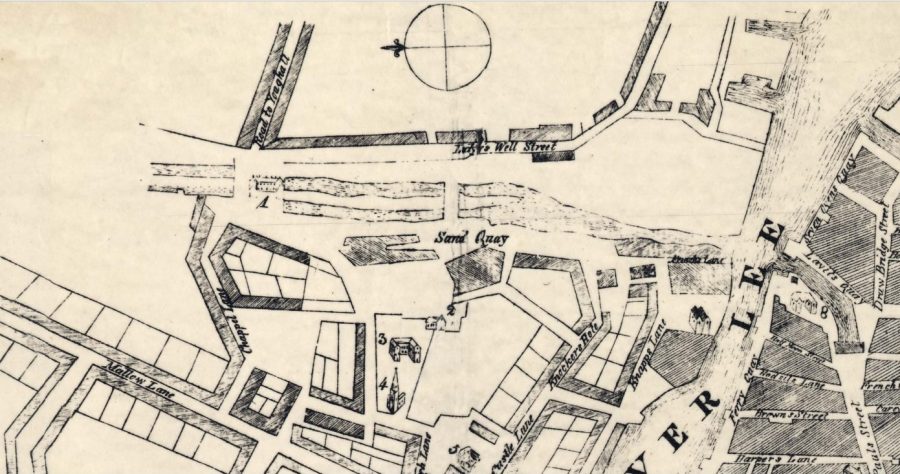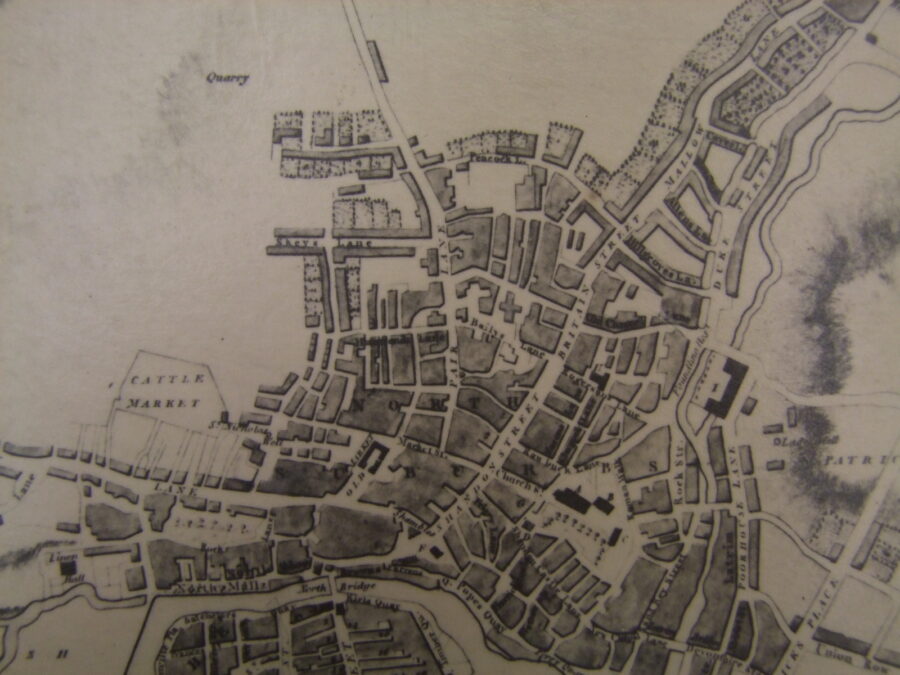
This trail begins at SS Mary’s and Anne’s North Cathedral.
Below is a brief historical walking trail, which covers some of the topics on my physical walking tour. The information is abstracted from various articles from my Our City, Our Town column in the Cork Independent, 1999-present day, Cork Independent Our City, Our Town Articles | Cork Heritage
Introduction:
Blackpool was the heart of industry in Cork in the eighteenth and nineteenth centuries for industries such as tanning through big names such as Dunn’s Tannery and distilling through families such as the Hewitts. The leather industry at one time was vibrant in Blackpool – with no fewer than 21 tanyards at work there in 1837 giving employment to over 700 hands and tanning on average 110,000 hides annually.
Blackpool also has messages about public relief projects in the form of the former Poor House site at Murphy’s Brewery to Madden’s Buildings to highlighting the work of Ireland’s social reformers through street names such as William O’Brien, Gerald Griffin, Daniel O’Connell and Tomás McCurtain. All these messages inject the place with memories of difficult times but also times of determination to survive against the odds.
St Mary’s and St Anne’s North Cathedral:
The present Cathedral of St Mary’s and St Anne’s is the fifth church on the site since the early 1600s (1624, 1700, 1730, and 1808). The story of the present day structure is as follows. In 1820, an immense fire greatly damaged the fourth cathedral so much so that it was really the skeleton structure of the burned cathedral that survived. However all was not lost and shortly after, the bishop of that time, John Murphy delegated to architect, George Pain, the rebuilding of the then 12 year old cathedral, inside and outside. George Pain was also responsible for the design of buildings such as Holy Trinity Church, St Patrick’s Church and Blackrock Castle.
Between 1862 and 1867, another addition, a tower on the western end was worked on. The local Canon, Foley oversaw the project but unfortunately the project was a complete disaster as funds for the tower went into quick decline. Consequently, Canon Foley had to become the clerk of works, director of operations, mason and labourer. To economise even more, the facing stones were cut in a way that they would cover more space. Disastrously, when a certain height was reached, the stones with the upright grain burst and work was halted.
In 1868, at an influential meeting of Catholic citizens, convened by then Bishop of Cork and Cloyne, Delany, certain alterations and improvements to the church were debated. The plans prepared by Sir John Benson were discussed and adopted. His plans for the new cathedral comprised a new overall geometrical plan or a plan, which reflected thirteenth century architecture. By the proposed plans, the church was to be enlarged to double its contemporary size with magnificent architecture. It was proposed to add to the east end, a nave, choir, chancel with four chapels and transepts with side aisles.
The external features were also to be on a grand scale. To be added to the side walls of the former church were buttresses or supports for the wall itself and parapets surmounted with minarets (small towers). To complete the cathedral, a spire was to be added to the western tower.
Early work commenced on the rebuilding of the buttresses, re-arrangement of the windows, and addition of the parapet and minarets to the southern aisle of the nave. By July 1869, many of the outer features were completed under the contractor, Mr R Evans, Union Quay including the parapets, spire and minarets. However, this was when the project ran into financial difficulty and the remaining features of Bensons’ proposals were never carried out. Instead of the proposed spire, four pinnacles were designed and constructed. At a height of one hundred and fifty–two feet, the present day cathedral stands ten feet higher than the adjacent tower of St Anne’s Church, Shandon.
READ MORE: Cathedral Parish, Cork, Ireland | North Cathedral of St. Mary & St. Anne (corkcathedral.ie)
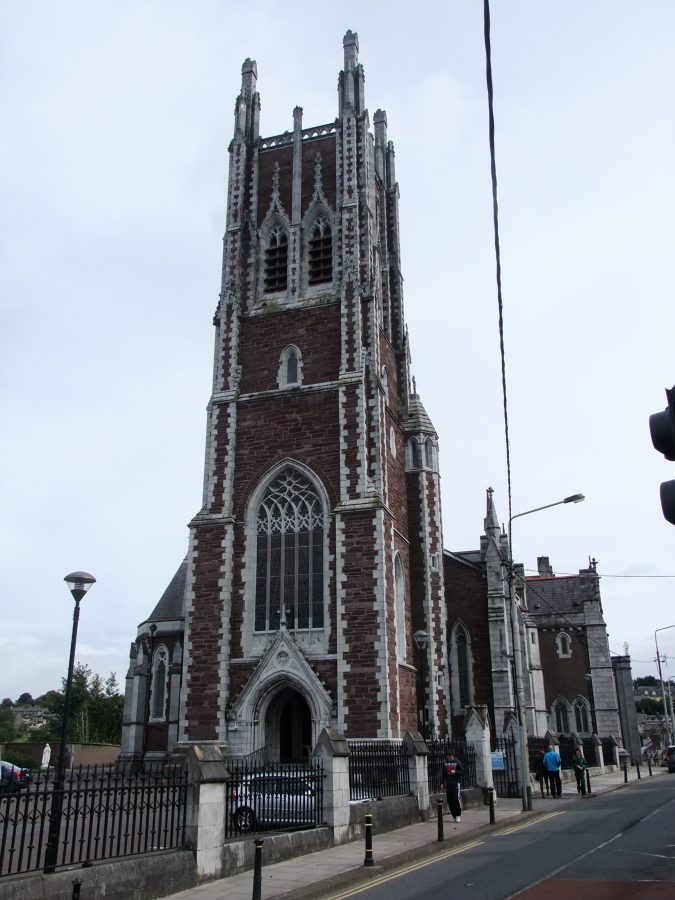
Gerald Griffin Street:
Gerald Griffin Street was formerly called Mallow Lane. In 1832, Mallow Lane was renamed Clarence Street, Duke of Clarence, George, who was an outspoken advocate of Catholic Emancipation.
Born in Limerick, Gerald Griffin (1803-1840) was a poet, playright and Irish Novelist. In 1823, he emigrated to London and got a job as a reporter for one of the daily papers. He later turned to writing fiction. One of his most famous works is The Irish Collegians, which was written about the murder of the Colleen Bawn in 1820.
In 1838 Gerald joined the Christian Brothers at the North Monastery and burned all of his unpublished manuscripts. At the age of 36, he died from typhus fever.
In November 1898, the motion of Cllr John O’Neil of Cork Corporation was accepted by his fellow councillors to change the name of Clarence Street to Gerald Griffin Street. Gerald Griffin also has a street named after him in Limerick City. Loughill/ Ballyhahill GAA club in west Limerick play under the name of Gerald Griffins.

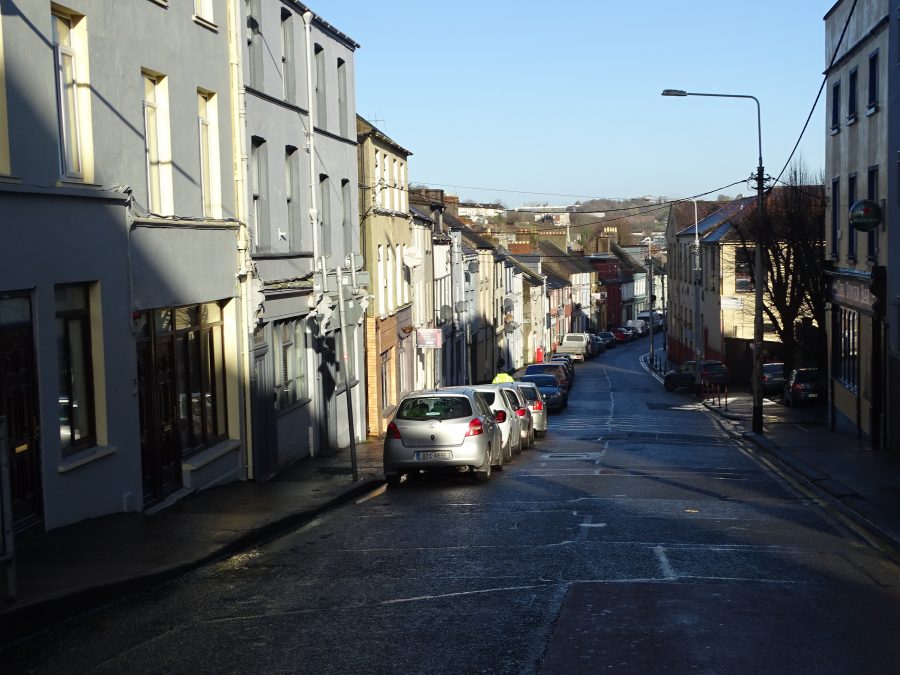
Chapel Lane and the First North Monastery:
In the late 1800s, only one third of the poor children aged between five and fourteen attended Cork schools. One third of the poor population were unable to read or write. For the poorer classes, there were several free public schools in early nineteenth century. In the early 1800s in Waterford, a new religious congregation was founded named the Society of the Presentation under the auspices of Edmund Rice.
The Catholic Bishop of Cork, Francis Moylan, wished to establish a Society of the Presentation branch in Cork. In 1811, that wish was fulfilled and the already existing Cork Charitable North School was taken over by the Presentation Brothers on the northside of the city. Such was the success of the order in treating some of the miseries of the poor children in Cork, further schools were built in the city.
The North Monastery School was founded on 9 November 1811 when two Christian Brothers Brother Jerome O’Connor and Brother John Baptist Leonard were given charge of a school in Chapel Lane by the North Cathedral by the Bishop of Cork, Rev. Dr. Moylan. Seventeen students attended on the first day.
In 1814 a fourteen acre sloping site was acquired from a wealthy catholic businessman, Sir George Gould, and a new school was built. The North Monastery had found its permanent home.
READ MORE: North Monastery Secondary School – An Mhainstir Thuaidh
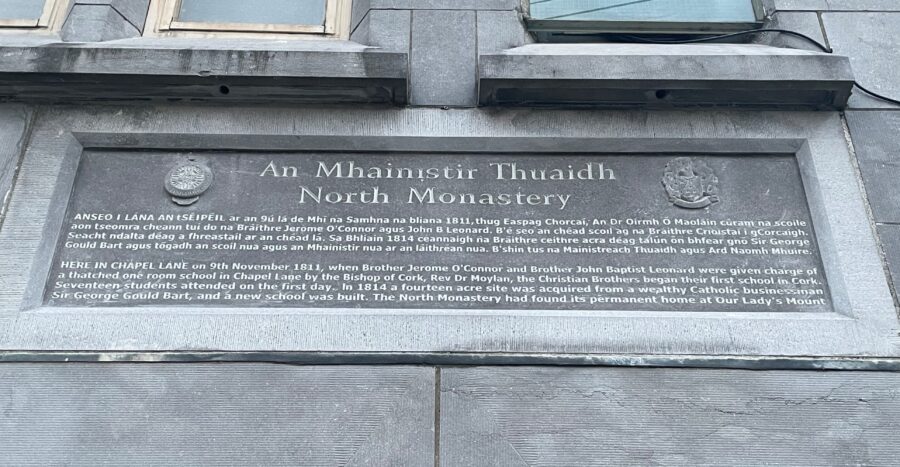

Presentation Sisters’ Convent Site:
The Presentation Sisters convent complex is striking on Gerald Griffin Street. Nano Nagle opened her first school in 1754 with about 30 students. It was on Cove Lane, on what is now the site of Nano Nagle Place on Douglas Street. She was a great educator and she believed in education as the key to a better life for people. Within nine months, she was educating 200 girls and by 1757, she had opened seven schools, five for girls and two for boys.
Nano Nagle (1718-1784) set up three small hovel schools in the North parish. The first was in Philpott-Curran Lane at the back of the Cathedral presbytery and was the school for girls. The others were at the end of Shandon Street and strictly for boys. One was located on the lefthand side at the very end of Shandon Street, an attic at the top of a four-storey house, while the other was on the little lane running at the side of where O’Connor’s Funeral Home now stands at the North Gate Bridge.
It was 1799 before the Presentation Sisters came to live in the North Parish. Bishop Moylan sent four ladies to South Presentation for training and after taking their vows they returned to a Philpott Curran Lane. A local lady, Barbara Goold had a second storey constructed on to her house and the sisters lived there while teaching hundreds of children until 15 January 1813.
The sisters needed a convent and a school and Bishop Moylan asked local priest Fr John England to take on the project. It took a long time to find enough money to buy a site and eventually a site at Hill Grove lane was bought from the Tanning Yard.
The infant school was replaced in 1871 through a plan to enlarge the school rooms and its facilities. It was formerly opened on 16 January 1872. It was designed by Sir John Benson and built by Edmund and Peter O’Flynn. It is now disused. A modern Presentation School stands nearby.
As well as a school a presentation convent and chapel was built. The chapel, which is said to date between 1820 and 1830 is thought to be the work of Presentation brother and architect, Rev Michael Augustine Riordan, who was also involved in the Ursuline Convent in Blackrock. To the north is the four-storey convent building, built c.1830.
The present primary school was built in 1965-67 and the old building was then used as a secondary school until the group moved to Farranree in 1976.
READ MORE: North Presentation Primary School | Gerald Griffin St. Cork (northpresprimary.ie)
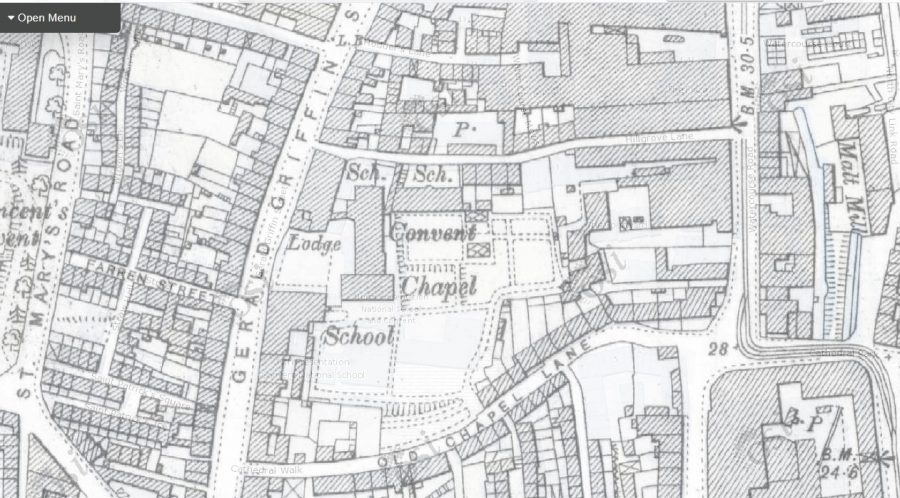

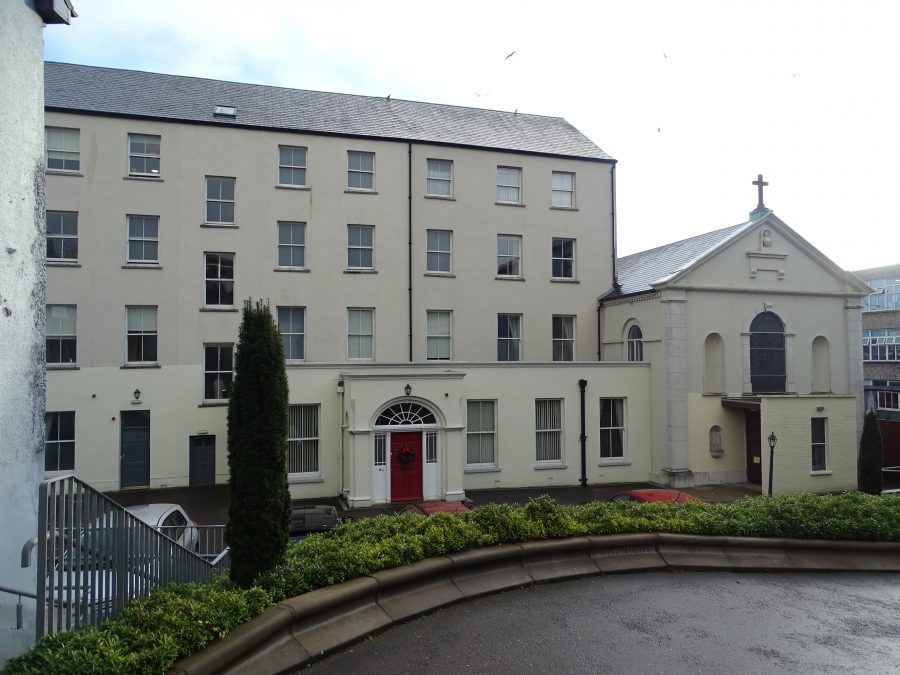
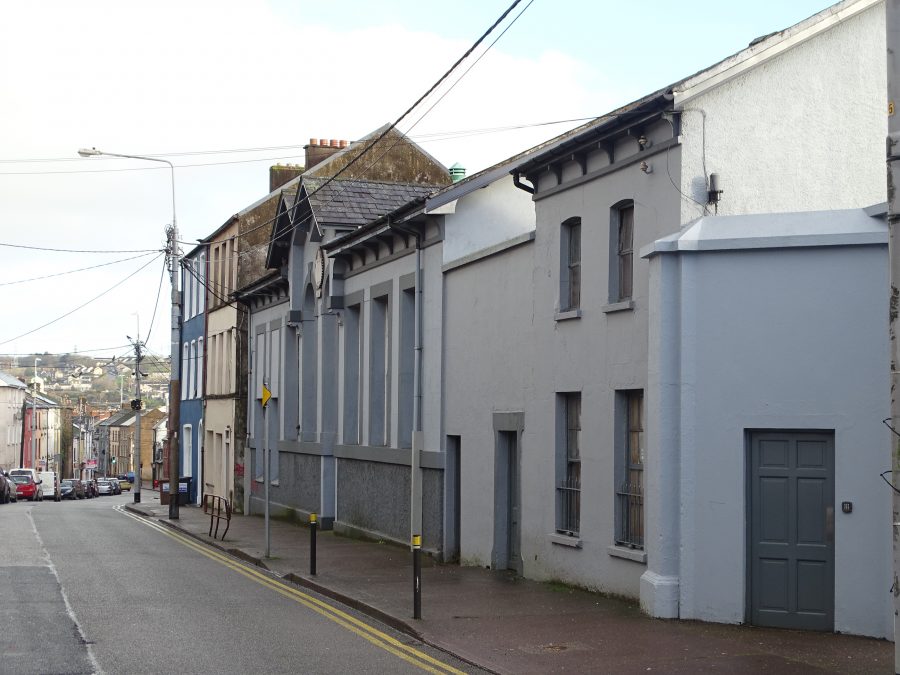
Neptune Stadium:
Neptune is the second oldest basketball club in Ireland, the oldest being Corinthians of Dublin. Neptunes, as the club has become colloquially and popularly known, was founded in c.1947 within the Irish Defence Forces Slua Muirí – hence the nautical name.
On 9 February 1948 hundreds of Cork sporting enthusiasts will witness a treat to which they have long been looking forward—the first public exhibitions of basketball, a game which had made unusual strides both in popularity and in style in the city during previous months.
Up to the autumn of 1947 the game was played only in very limited circles-Army, L.D.F., Boy Scouts and a few schools in the city. It was comparatively unknown to the general body of sportsmen, but in the autumn a league was started and the organisers were practically inundated with applications to participate.
Prominent amongst the twenty odd clubs, which affiliated were members of Cork football teams under all three codes, and the league brought into opposition many well-known players of different games who had never hitherto met on any common ground.
Some years later the Neptune members moved out on their own and founded the northside’s famous club. With teams in all grades of the sport, in both male and female competitions, it has become one of the top clubs in the country, with many national awards to its credit, as well as local and provincial trophies.
Fast forward to 1983 and Neptune was one of the biggest clubs in the country with their senior team playing under the Burgerland International banner, won both the League title and the Roy Curtis international club series in 1982. They were also voted “Club of the Year” by the Irish Basketball Association.
In July 1983, plans for a new stadium covering 22,000 sq feet was proposed with seating capacity for over 2,500. The cost of the project was to be met by the club’s fund-raising activities, including the sale of three-year tickets and advertising space within the stadium.
The Stadium was to be built on a site at St Catherine’s Square, which was at the junction of Gerald Griffin Street and Burke’s Avenue. The stadium was opened on 1 January 1985 overseen by an attendance of the biggest ever crowd at a basketball game in Ireland and was well in excess of the 2,000 plus crowd.
READ MORE: The book, Gods by the Lee’: The story of how Neptune made waves in basketball, tells tales of first journey’s abroad, mishaps with old jalopies of cars and bomb scares. It chronicles how Cork’s Northside became the stronghold of basketball from its beginnings, in the only playing court available at Collins Barracks to the many civilian teams and courts of today, the first civilian players being Neptune members.
‘Gods by the Lee’: The story of how Neptune made waves in basketball (echolive.ie)

WATCH author Jim O’Donoghue speak about the financing of Neptune Stadium in the early 1980s.
Great William O’Brien Street:
The street’s former name was Mallow Lane and then Great Britain Street. In 1905 through a motion by Councillor Millard of the Corporation of Cork the street was renamed in honour of the work of William O’Brien (1852-1928).
William was a journalist, agrarian agitator and Irish Nationalist, politician, party leader, newspaper publisher, and author. He was also a member of Parliament in the House of Commons. During the late nineteenth and early twentieth centuries he was involved in campaigns for land reform in Ireland as well as Irish Home Rule campaigns.
Laneways and Blackpool:
In the nineteenth century narrow lanes were widespread in Cork’s suburbs. The various habitations varied from cabins to cellars. Archival Cork Corporation reports on their terrible nature record the presence of large dunghills strewn across adjacent laneways.
Following the passing of the Common Lodging Houses in 1853, a number of the officers of the Corporation employed upon the corporation’s markets, were assigned separate districts of the city, with instructions to examine a number of those houses, ascertaining the “state of cleanliness or the contrary which prevailed, the condition of the houses, the character which each house bore, and the numbers, sex and characters of its inmates”. The results of these enquiries were laid before a Corporation Committee.
In the northern districts of the city were the most crowded and populous streets. Wretched houses, divided into separate tenements, accommodated a large number of people – upwards of four people in small rooms.
The distress amongst the people in Blackpool was terrible. Many families being on the verge of starvation and who were ashamed to make public their abject poverty. There was an enormous want of cleanliness and proper ventilation. Foul atmospheres sweltering in summer under the same unwholesome heat, and shivering in winter under the cold.
Strong recommendations came right through into the early twentieth century that these slums should be demolished on public health grounds. In time many of the impoverished were moved to more spacious housing in the newer suburbs of the city.
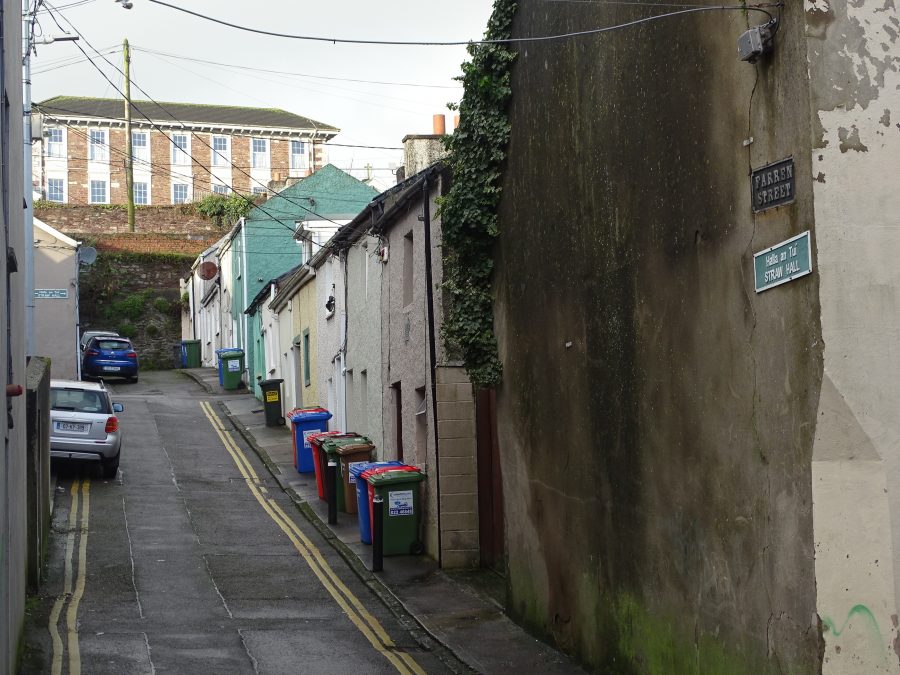
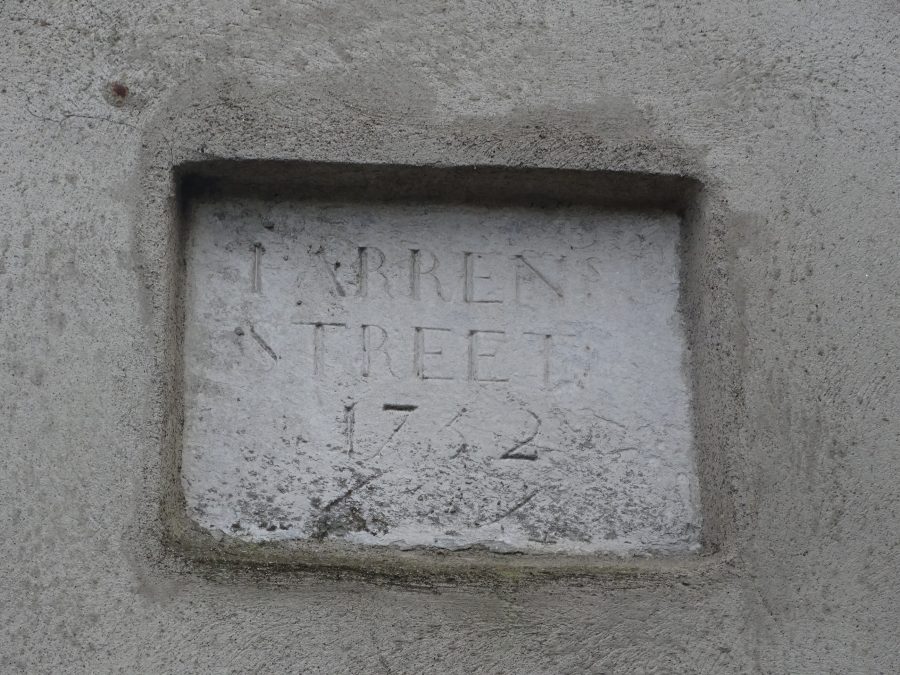
Farranferris:
There had been a diocesan seminary in Cork since the early 1800s. It began across the road from the North Chapel, moved to what is now the Mercy Hospital and from there to the present Christian Brothers College on St Patrick’s Hill.
In 1884 Bishop William Delany decided to build a new diocesan seminary at Farranferris overlooking Blackpool. His choice of location was an auspicious one. Its privacy, its elevated and healthy aspect and its rural and peaceful surroundings were ideal for a college of its type. It was constructed by Edward P O’Flynn at a cost of £17,000 to designs by Samuel Francis Hynes.
Dr Patrick Sexton became the president of Farranferris in 1907. At the time the college had about twenty students, all of whom were intending to become priests in time. There was no entrance exam. A candidate only needed a testimonial from his parish priest to be admitted. A short time after he took over, Sexton decided that Farranferris should accept day pupils for outside students. The first of these boys began classes in September 1909. The school closed in 2006.
The premises is now occupied in part by a local Gaelscoil and Northside Enterprises but is administered by the North Cathedral Parish.
Read more about Farranferris Educational Campus here: NCE | Education & Training in the Community
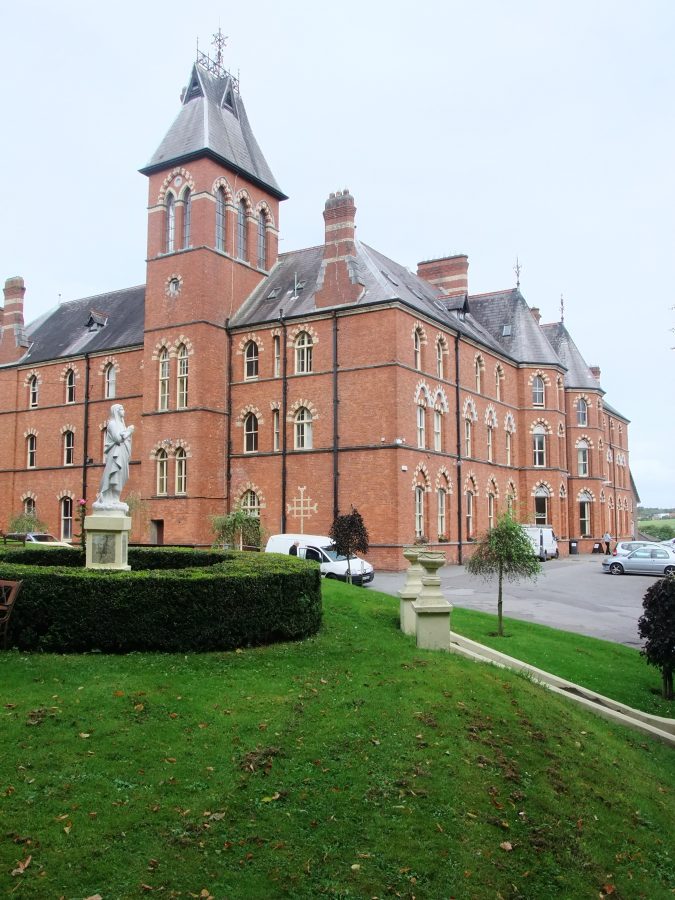
Cork City and County Archives:
In July 2006 Cork moved from the eighteenth to the twenty-first century with the transfer from the former Christ Church on South Main Street to a state of the art building at 34, Great William O’Brien Street, Blackpool, of the Cork City and County Archives, which was officially opened by then Lord Mayor of Cork, Deirdre Clune.
It became the first new stand alone archives building in Ireland, supported by the city and county and university libraries and charged with the preservation and custody of local public and privately donated archives spanning a period of over 300 years and regarded as being some of the richest and most precious in the country.
The new purpose-built facility designed by the City Architect’s Department meets the latest standards for keeping fragile and unique manuscripts and other archives under proper conditions. Features include:
Over 6,000 square feet of climate controlled strong rooms kept at low humidity and temperature to prevent deterioration of materials; A spacious reading/research room for the public to consult original archives, microfilms and electronic images; ‘Dual use’ exhibition and lecture room space for heritage exhibitions, talks, educational and cultural activities.
Adequate working areas to allow staff to undertake background work which enables archives to be properly preserved and accessible to the public. This includes indexing, cataloguing, boxing and cleaning; Facilities, including a hi-tech scanner, for digitisation of documents for use on the internet and for exhibitions and Solar panels to reduce energy costs.
VISIT the website and catalogue Cork City and County Archives:
home > Cork City & County Archives (corkarchives.ie)

Water Lane:
The publication of Ireland: Its Scenery and Character (1840) is a travelogue of sorts by Samuel Carter Hall (1800-1889), and his wife Anna Maria (1800-1881). Samuel was a well-known journalist and editor of The Art Journal. Anna Maria was a novelist and playwright. It is a three volume guide to Ireland between 1841-1843. Each chapter is dedicated to a different county. Volume I examines the counties of Cork, Kerry, Waterford, Limerick and Carlow.
Many illustrations, including ink drawings, sketches, paintings and maps are included in the guide. Within the Cork section of volume one there are many nods to the resilience of community life in Cork, which still strongly prevails. The Cork section comprises a sketch of Water Lane in Blackpool, which was utilised by local historians writing on nineteenth century Cork and life for impoverished communities. The Halls remark upon the image and its peculiar character;
“The most remarkable is the painter James Barry of the house in which he was born, Mr Crofton Croker has supplied us with a sketch, which we copy, not merely because of its interest in association with the memory of the eccentric artist, but as affording a correct idea of the peculiar character of the suburb of an Irish town. The house is in Water Lane, in the norther, or ‘Blackpool’, suburb, and is marked by two women at the door”.
The reference to Thomas Crofton Croker carries the image back to his celebratory research work on Irish traditions and community stories earlier in the early nineteenth century. Born in Cork in 1798 Thomas had considerable talent as an artist. From the age of fourteen made several excursions in the south of Ireland – sketching the character of people. He went to London as a Clerk in the Admiralty for thirty years. His books include Researches in the South of Ireland (1824) and Fairy Legends and Traditions of the South of Ireland (1825).

Water Lane, Blackpool from the publication of Ireland: Its Scenery and Character (1840) by Samuel Carter Hall (1800-1889)
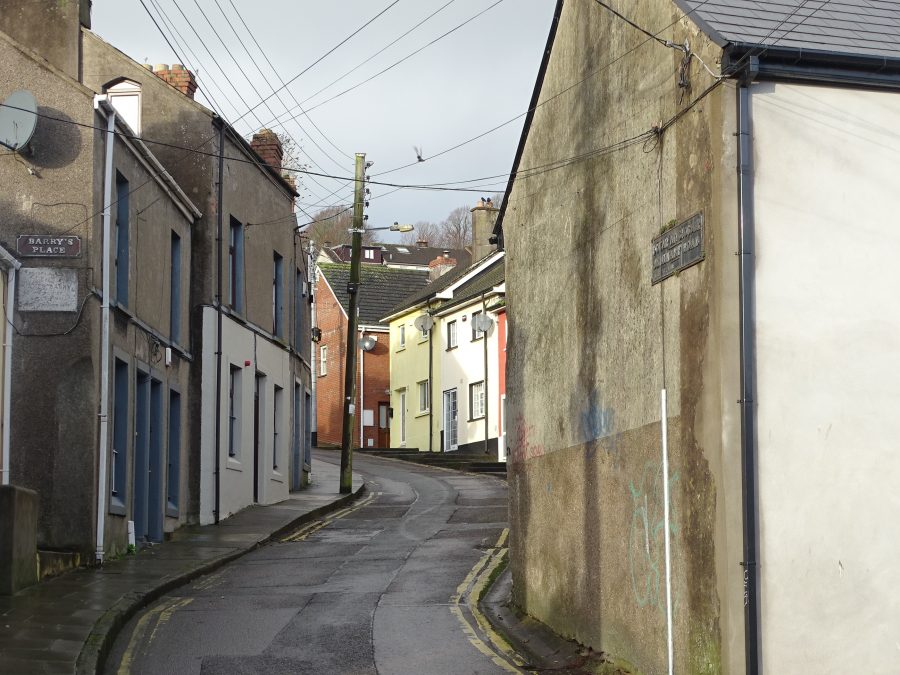
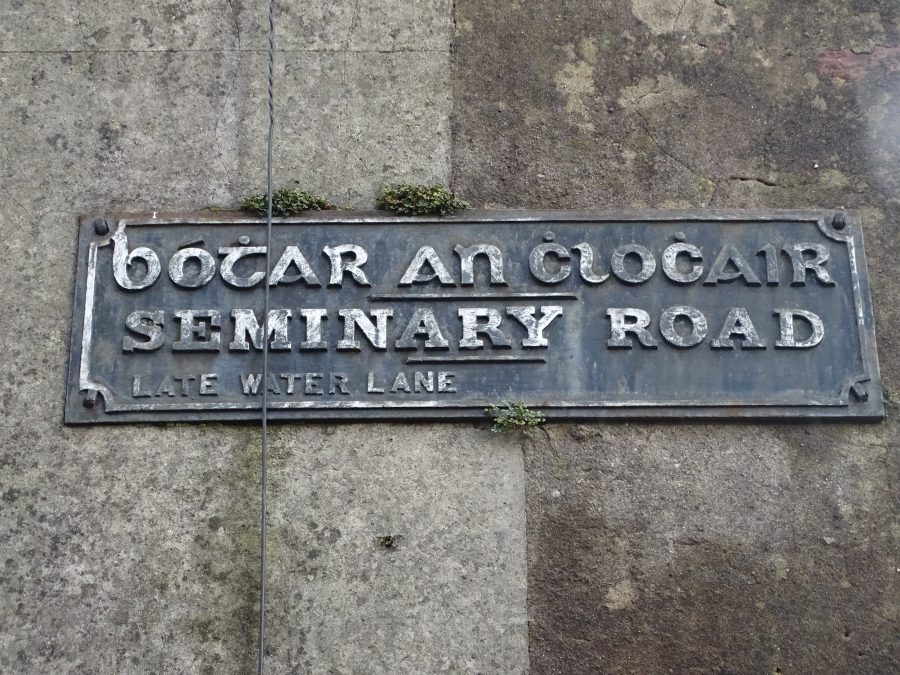
Water Lane and the Birth Place of James Barry:
The reference to James Barry is also of significance. Born in Cork in 1741, his father had been a builder, and, at one time of his life, a coasting trader between the two countries of England and Ireland. To this business of trader James was destined, and he actually made several voyages as a boy. However, following his own inclinations led James towards drawing and study. His early paintings attracted the patronage of Edmund Barry, who pushed for his work to be put on display in Dublin and London. in the latter part of 1765 James was enabled to study and paint abroad. He went first to Paris, then to Rome, where he remained upwards of three years, from Rome to Florence and Bologna, and thence home through Venice.
In 1774, a proposal was made through Valentine Green to Sir Joshua Reynolds, West, Cipriani, Barry, and other artists to ornament the Great Room of the Society for the encouragement of Arts, Manufactures and Commerce (Royal Society of Arts), in London’s Adelphi, with historical and allegorical paintings. The series of six paintings were known as The progress of human knowledge and culture. Soon after his return from the continent, James Barry was been chosen as a member of the Royal Academy.

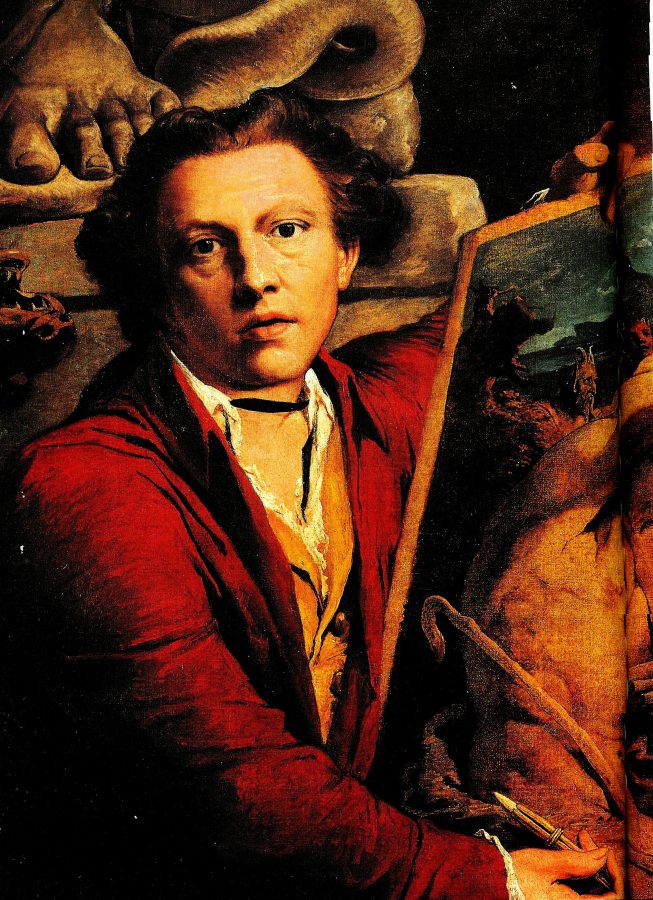
LEARN MORE on James Barry’s Printmaking with Dr Esther Chadwick, Lecturer in Art History, The Courtauld, London:
Madden’s Buildings:
In 1875 an Act named the Artisans and Labourers Dwellings Improvements Acts and later the Housing of the Working Classes Act of 1890 detailed the importance of eradicating tenement or slum housing. At this time no large financial aid was available to carry out large-scale clearance.
However, Cork Corporation did make an effort. In 1886, 76 new houses were built in Blackpool on the site of an old cattle market. A total of 76 houses were planned and built comprising a kitchen, front living room, two overhead bedrooms. The contractor was Edward Fitzgerald and by the end of 1886, they were ready for occupation.
Named the Madden’s Buildings after the Mayor of the time Paul Madden, these new houses were to set the scene for a further three housing schemes before the turn of the 1900s. These comprised of Ryan’s Buildings built in 1888 (16 houses), the Horgan’s Buildings built in 1891 (126 houses) and the Roche’s Buildings in 1892 (128 houses). All of these buildings are still lived in by a new generation of Corkonians.
An obituary for Paul Madden in the Evening Herald on 8 January 1901 outlines that he was as one of the most prominent of the Southern merchants, and took a leading part in political matters, always maintaining a Nationalist position. At the time of political split he allied himself with the Parnellites. Paul Madden was Alderman for the North-West Ward for a long number of years, becoming a Councillor on the advent of the local Government Act. He was also a director of the Cork Gas Company and of the Munster and Leinster Bank (which he helped to build up, and of which he was chairman at on« time).
Research more in Cork Archives: Check out Eugene’s Crowley’s Survey and History of Cork City Council Labourers Dwellings (includes drawings), Cork Archives Online Catalogue 5 | Details
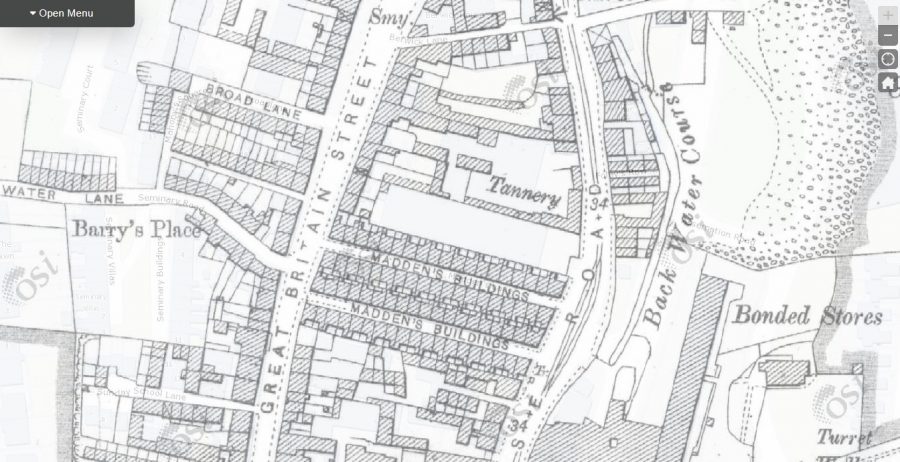

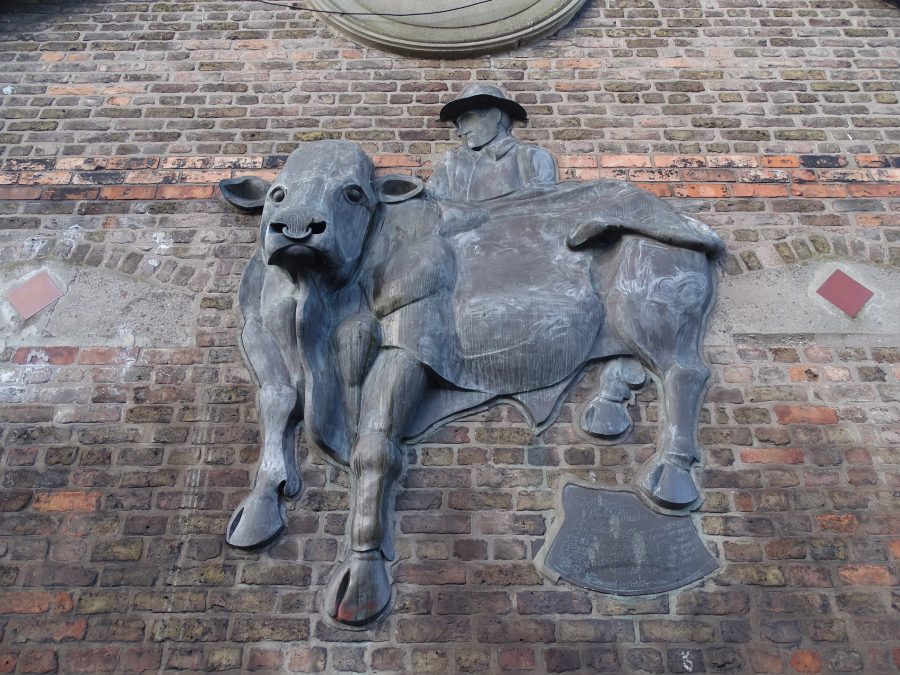
Tomás MacCurtain Memorial:
Erected in 1999 (with a design by Tighe O’Donoghue) the Tomás MacCurtain Memorial remembers Cork’s Lord Mayor. Tomás was born on 20 March 1884 in a farmhouse in Ballyknockane townland, 14 miles north of Cork City. Thomas was the 12th and last child of Patrick Curtin and Julia Sheehan. He was educated at the Burnfoot National School and later at the North Monastery School in Cork City.
Tomás MacCurtain, joined the Gaelic League in Blackpool, Cork City in 1901. By 1902 he was the group’s Secretary. Tomás had a very attentive memory, loved Irish poetry, music and dancing. He was very interested in Irish history and archaeology and learnt to play the bagpipes. He was an accomplished violin player and sometimes played in an orchestra. This brown-haired, blue-eyed Irishman had great determination and business capacity.
At the age of 13, in 1897 Tomás moved to the city to live with his sister at 68 Great Britain Street and attended the Christian Brothers North Monastery where he began to learn Irish. After Tomás left school he worked as a Clerk for the City of Cork Steam Packet Company. In 1907 he secured work at Marks Mills in Crosses Green and in his spare time he taught the Gaelic language to those wishing to learn.
By 1911, Tomás was involved in the running of Fianna Eireann, and became a Volunteer in 1914. He wanted to see a revival of the Irish language and national freedom and for his cause he served prison terms in 1916 and 1917 in Wakefield, Frongoch and Reading in England.
Tomás met Eilis Walsh, daughter of a Stonemason, John Walsh. She was very active in the Gaelic League and they married on 28 June 1908. They had 6 children, the first dying as an infant. Patrick, Siobhan, Sile, Maura, Eilis, and Thomas Jnr. They made their home at 40 Thomas Davis St, Blackpool, in the northern part of Cork City.
In January 1920, Local Government elections were held in Cork City, and Sinn Fein got the opportunity of dominating local councils. Tomás was elected by the people of his Ward, N-W No. 3 and from his elected peers, was selected to be the Lord Mayor of Cork City.
Just after 1 am on Saturday 20 March 1920 men with blackened faces and in semi-disguise burst into the MacCurtain home. They knew their way to the main bedroom. These men from the Royal Irish Constabulary shot the Lord Mayor (for more info click here: http://kieranmccarthy.ie/?p=16343)
In the house at the time were Mrs MacCurtain and her five children, plus her brother (James Walsh) three sisters, two nieces and a nephew, and elderly Mrs Walsh. Tomas died from shock and haemorrhage caused by bullet wounds, and passed away after receiving the Last Rites.
Such was public reaction, that the funeral on Monday 22 March, from the North Cathedral was very large. He is laid to rest in St Finbarr’s Church graveyard, in a plot facing the main gate.
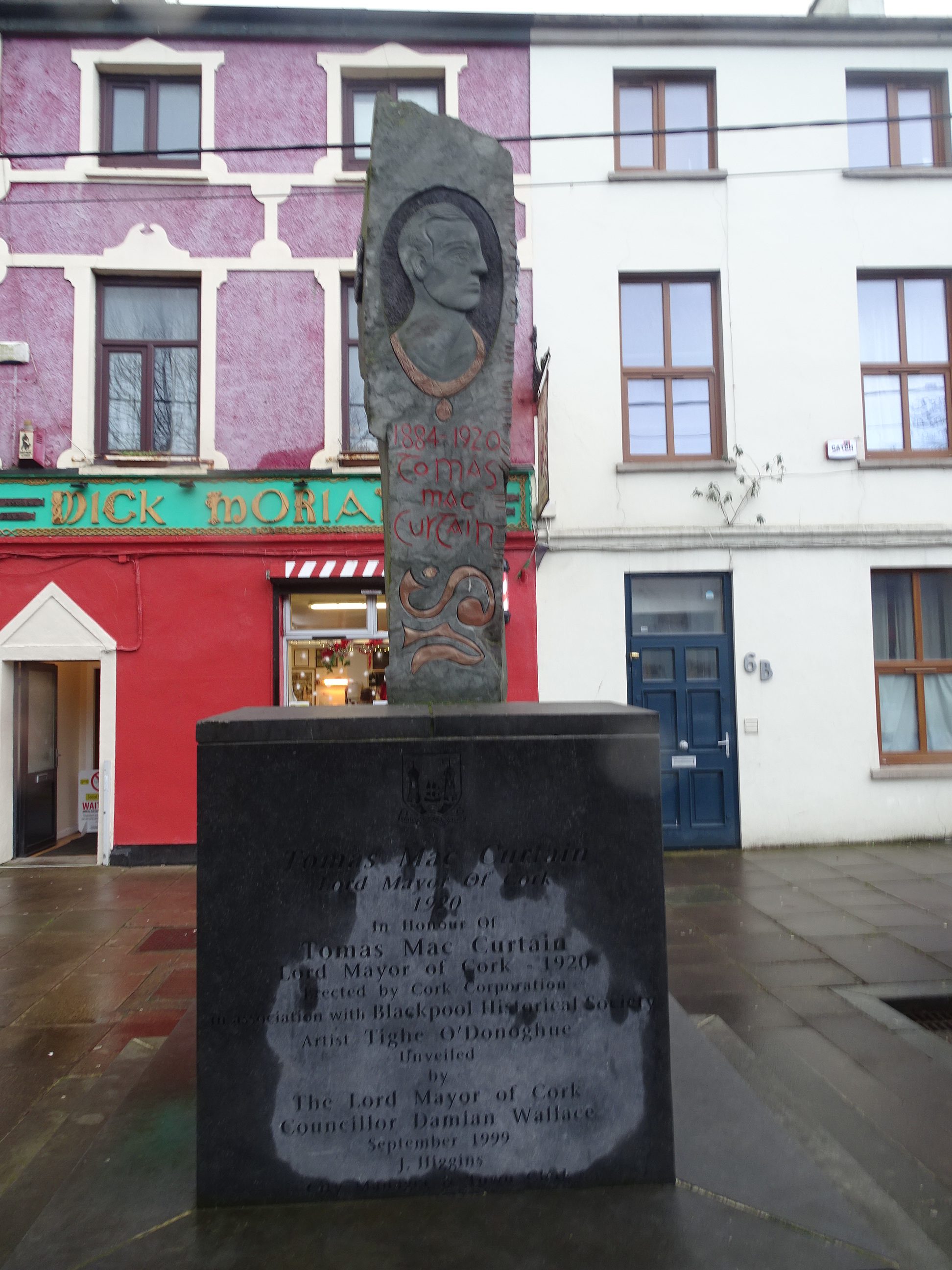

VIEW footage of the funeral of Tomás MacCurtain taken in 1920:
Church of the Annunciation:
The Church of the Annunciation on Great William O’Brien Street in Blackpool replaced an earlier church called St Nicholas (built 1895). It was officially dedicated on 7 October 1945. Its design was by the noted Blackpool stone carver Seamus Murphy.
The church was built by the staff of Sunbeam Wolsey Ltd (under Mick Callaghan, foreman) of which Mr William Dwyer was the founder and Managing Director.
Seamus Murphy, a native of Mallow, had a stone yard on Watercourse road for many years. Other well-known works by Murphy include the bust of Michael Collins in Fitzgerald’s Park, the busts of Sean O Faolain and Frank O’Connor in the Cork City Library and the curious little water trough for dogs on St Patrick’s Street.
The Church was designed and built as a replacement for Saint Nicholas’ Church, which stood on the site. Saint Nicholas’ was constructed in 1895 by adapting the Blackpool National School building, which then moved to Brockelsby Street. It was financed by Nicholas Murphy of Blarney Woollen Mills. A police barracks had also occupied part of the site.
The Church of the Annunciation is constructed of concrete blocks, stipple plastered inside and out. There is an 80 ft bell tower and two smaller towers that form the transepts. The stained glass, including the impressive crucifix, sanctuary windows and the picture gallery of Our Lord (Nave windows) are by Harry Clarke Studios in Dublin.
The tabernacle, lamp, candlesticks and other brasses were designed by Seamus Murphy and made by Gunnings in Dublin.
The stonework in the church is mostly by Murphy himself. His works include: The Annunciation Panel over the front door; The Annunciation Tablet on the exterior side wall; The Dwyer Plaque in the porch; The Baptismal Font originally at rear of the church, now near the altar; The Holy Water Fonts in polished black limestone; The Main altar depicting corn and grapes; The Children’s Altar depicting the Holy Family; and Our Lady’s Altar depicting a crowned angel and foliage.
The most striking stonework in the church includes the Madonna and Sacred Heart Statues on either side of the main altar. The Sacred Heart is in Portland stone with a marble base and was added to the church in 1947. It is 6ft high.
The Madonna was in the church in 1945 but was located on Our Lady’s altar. It has subsequently been moved to its present position. It is 5 ft 6 inch high and is signed “Seamus Murphy 45”.
LEARN MORE: Blackpool Parish | The Parish of Blackpool, The Glen and Ballyvolane Cork

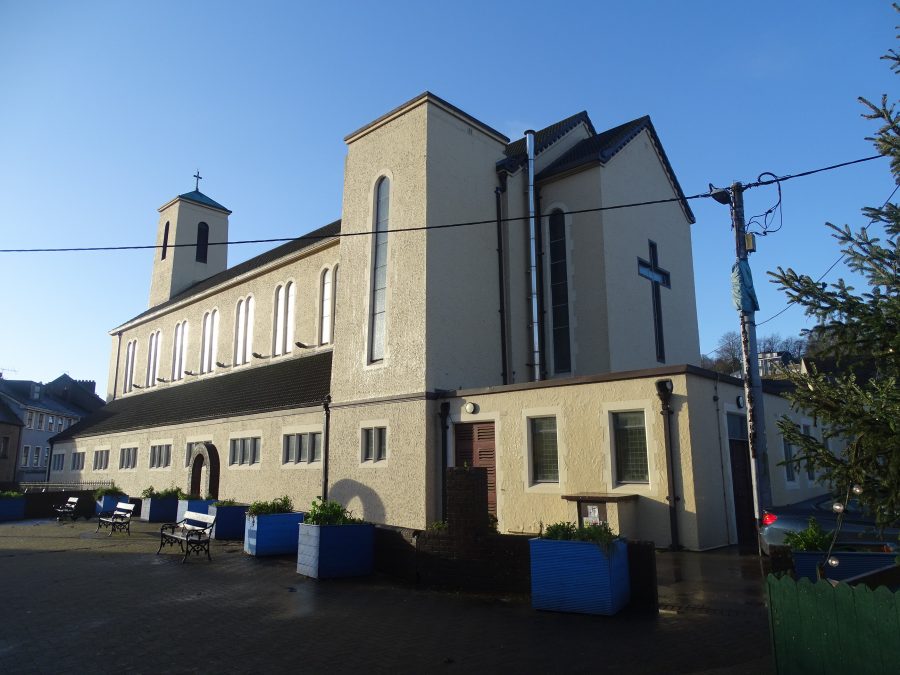
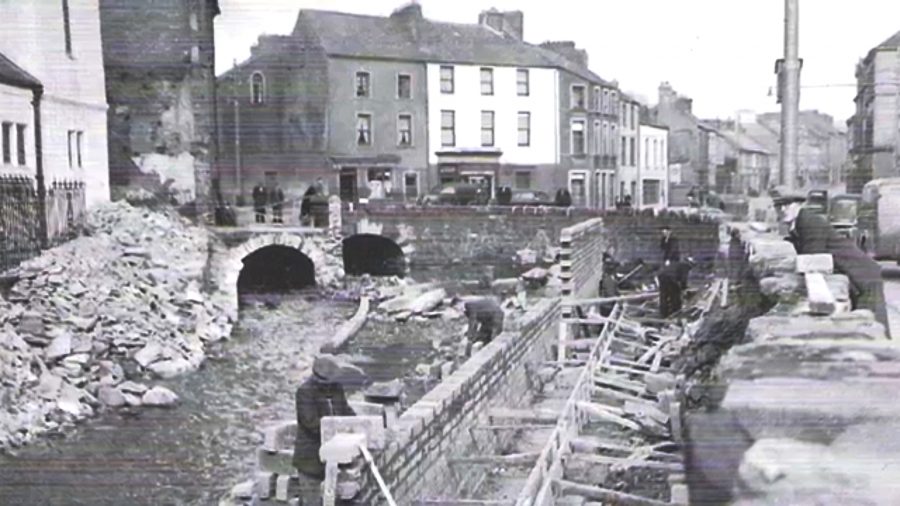
Commons Road & Toll House:
In one of the houses on Commons Road, nearer the Church of the Annunciation side, was located a toll house. Under several charters granted from the time of Henry III in the thirteenth century, the Corporation claimed the exclusive right to hold markets in the walled town. On 15 October 1303, the bailiffs and men of Cork, obtained permission to pay the expense of a conduit for supplying the city with water, out of certain tolls called murage, which they had for six years, and which were granted to the cities of Ireland, for the purpose of building or repairing their walls.
The tolls imposed early in the seventeenth century by the Corporation were for the specific purpose of “keeping the North, and South Main streets in good repair”. The tolls schedule enumerated a number of number and of articles, all of which through time immensely varied both in absolute and comparative value.
Campaigns to remove the tolls were consistent. Circa 1710 petitions were sent to the Irish Parliament by Cork farmers, and the following year the differences that existed were, it appeared, amicably settled with some farmers, who became exempt. On 17 July 1787, the toll areas were described; “The gateage tolls and other customs be set in the following lots, to wit: The Dublin road and Mallow road, together; Fair Hill, Cattle Market, and Blarney Lane, together; Youghal Road, Spring Lane, and Leitrim Street, together; the Lough and Gallows Green Roads, together; the Upper and Lower Glasheen roads together; the Upper and Lower Douglas Roads together”.
In the late nineteenth century, hides or grain happened to be sent by rail from Queenstown or Aghada to Cork, they were subject to a hefty toll. However, if they were sent by water from Cork’s nearest port they were not subject to no toll nor dues of any kind.
The tolls were also an enormous cost of collection. At several stations the cost of collection was greater than the whole sum received. Another anomaly was that the tolls were not payable at all by freemen of the city.
In 1888, the members of the Cork Corporation Committee on tolls expressed themselves desired to abolish the tolls. But they considered that in their current state of the corporate finances they could not recommend the Council to sacrifice a net revenue of about £2,400 per annum, unless a plan could be devised by which they might be indemnified for at least- some portion of the loss. It was several years more before the tolls were abolished.
The toll houses were owned by the Corporation of Cork and leased out to the highest bidder.
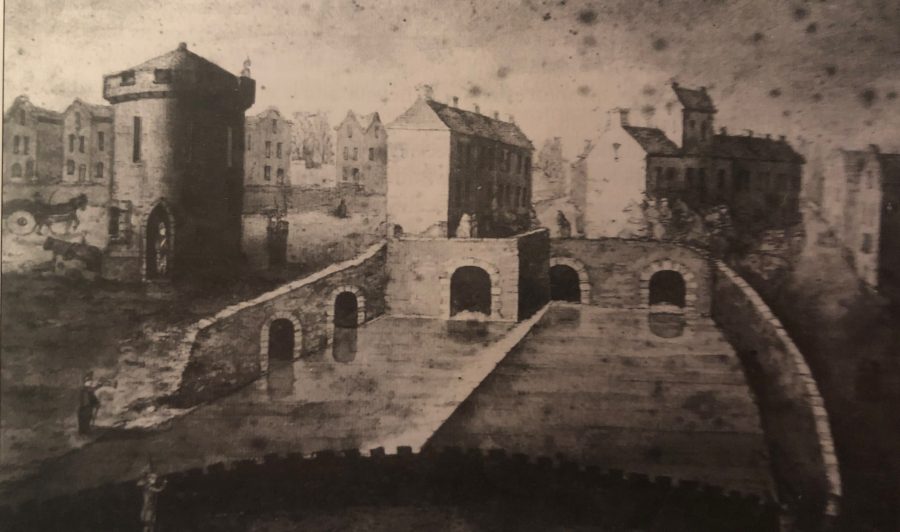
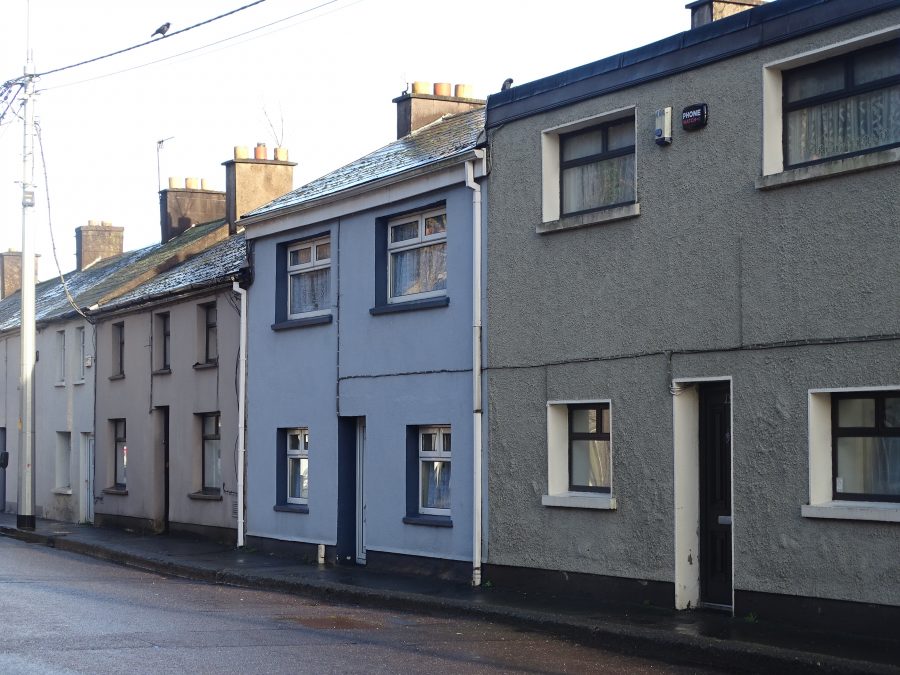
The Spring Lane Tannery:
Blackpool was the scene of Industry in Cork in the eighteenth and nineteenth centuries. In this district, various attempts were made at various times to start or revive the manufacture of textiles such as broadcloth, blankets, flannels, hosiery, thread, braid and rope.
The leather industry was also vibrant in the Blackpool area giving employment to over 700 hands and tanning on average 110,000 hides annually.
Tanning is the process of making leather, which does not easily decompose, from the skins of animals, which do. Traditionally, tanning used tannin, an acidic chemical compound. Colouring may occur during tanning. A tannery is the term for a place where these skins are processed.
In 1835, records of industrial enterprises reveal that there were possibly forty-six tan yards in various parts of the city, the most extensive being located in the North Gate Bridge vicinity where there were 615 tanners in constant employment. The average number of hides tanned annually amounted to 110,000 and from 1835 onwards tanners found it necessary to import hides from as far afield as Montevideo and Gibraltar in order to supplement local supplies.
Richard Griffith’s Evaluation of 1852 listed twenty-onetanneries in the Blackpool area. By the turn of the twentieth century only a handful of tanneries remained in production. The main tannery was Dunn’s on the Watercourse Road.
One of the most extensive tanyards in Cork belonged to Daniel, fourth son of Jeremiah Murphy. This was located in Blackpool. The firm of Daniel Murphy & Sons was not affected by the decline, which ruined many tanning enterprises following the 1830s. A partnership formed with the firm of Dunn Brothers. They maintained the business and the new firm became the largest tanning concern in the country at the time”. The Great Famine though dealt the industry a very serious blow from which it never recovered. From that date onwards, the industry steadily declined.
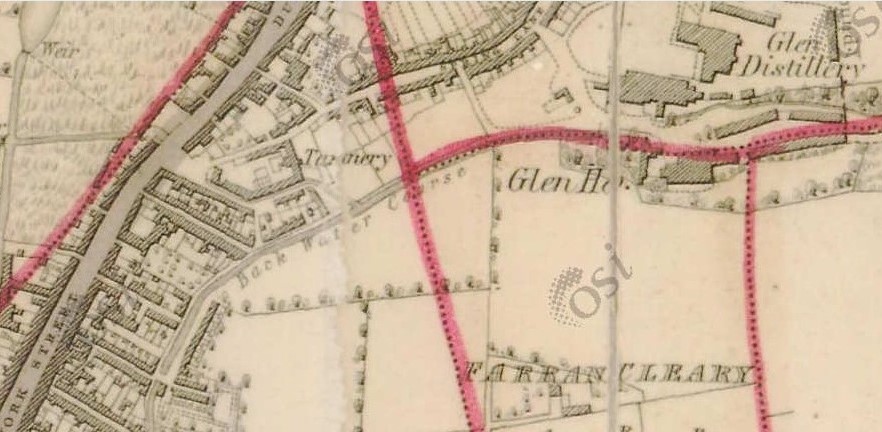
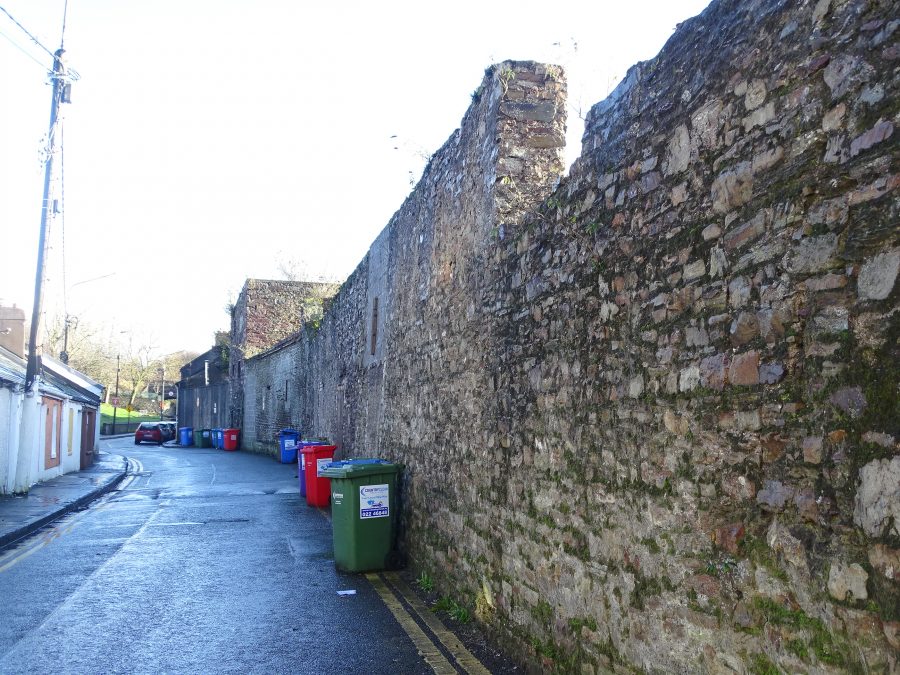
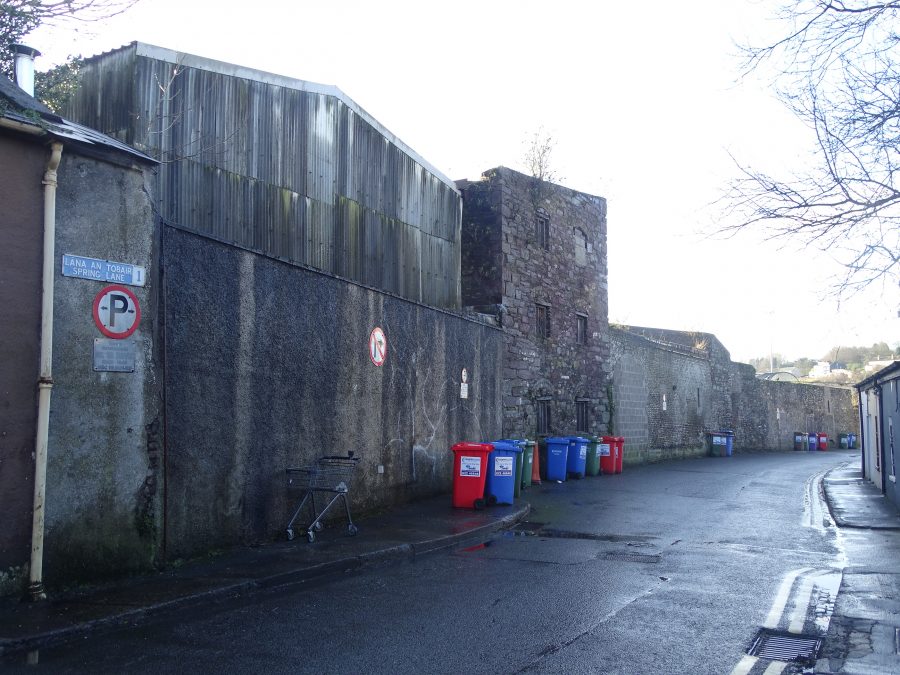
Glen Distillery:
Gerard Martin O’Brien’s book on The Glen in the heartland of Cork’s northside is an impressive landmark and beautiful publication. It is a personal memoir brought alive with deep research on the story of such a space of industrial heritage but also the movement in recent years to restore the space as one of Cork’s leading biodiverse parks. The book is entitled Faeries, Felons and Fine Gentlemen, A History of the Glen, Cork, 1700-1980.
Gerard’s research details that the quarrying of stone, sand and gravel probably represented the first efforts at exploitation of the Glen’s resources. Historic documents refer to a ‘north’ and ‘south’ sand quarry in the eighteenth-century Glen. A third quarry was also opened in the nineteenth century on the borders of Cahergal and Clashnaganiff townlands. The rock on the south face of the Glen was also quarried, most likely to build the mills in the eighteenth century and the distillery in the early nineteenth.
However, from examining a succession of early OS maps, Gerard argues that it is probable that the quarrying of stone continued, at least periodically, throughout the nineteenth century. The sand quarries have now either been built over or landscaped, but evidence of the stone quarries can still be traced.
Gerard maps out and writes in detail that towards the end of the eighteenth century, flax milling was established at the eastern end of the Glen, but the process appears to have lasted only thirty years at most, before the mill was converted to a starch mill. The only other manufacturing process to be carried on in the Glen at that stage was iron working – a trade as old as corn milling – so it appears that a slow, steady, hardly changing way of life prevailed for the first century covered in this work.
Gerard describes that in effect, the mills are centred in two clusters; “The iron mill, flax mill and one corn mill were located at the eastern end of the Glen where the landscape is broader, and the hills rise gently from a wide, marshy base. The malt/corn mills and the distillery/fertiliser factory were at the western end where the hills rise steeply to approximately one hundred feet and the valley floor has a characteristic V-shape”.
With the beginning of the nineteenth century the establishment of the distillery introduced an industrial model to the Glen. Gerard outlines that the first of these individuals, Humphreys Manders, went bankrupt almost immediately. The Perrier Brothers, with more money and experience, straightaway took his place. They did not live in the Glen and had other interests elsewhere in the city. The nineteenth century would see several such individuals associated with the Glen.
The Glen Distillery was equipped with appliances of the most modern type, a distilling plant using the most approved principles, was invested in. The Old Pot Still system of whisky distillation was adapted. The adjacent Glen River water supply of the establishment was practically inexhaustible. In 1892, the annual output of the Glen Distillery reached a total of 60,000 gallons and growing.
The whiskies of the Glen Distillery Company established themselves as prime favourites not only in all parts of Ireland, but also throughout the United Kingdom, America, and Canada. The City Offices of the Company are a t Carroll’s Quay, Cork, the London agents being Messrs. G .W . Christie and Company, Cannon Street, E.C.
Then, as the twentieth century dawned, a new type of industry dominated the landscape – Goulding’s Fertilisers, which was arguably the first Irish multinational industry.
Circa the year 2,000 Cork Corporation began developing more the adjacent Glen River Park as a public amenity.
Faeries, Felons and Fine Gentlemen, A History of the Glen, Cork, 1700-1980 by Gerard Martin O’Brien – copies can be bought through his website www.bluehorsepress.net.
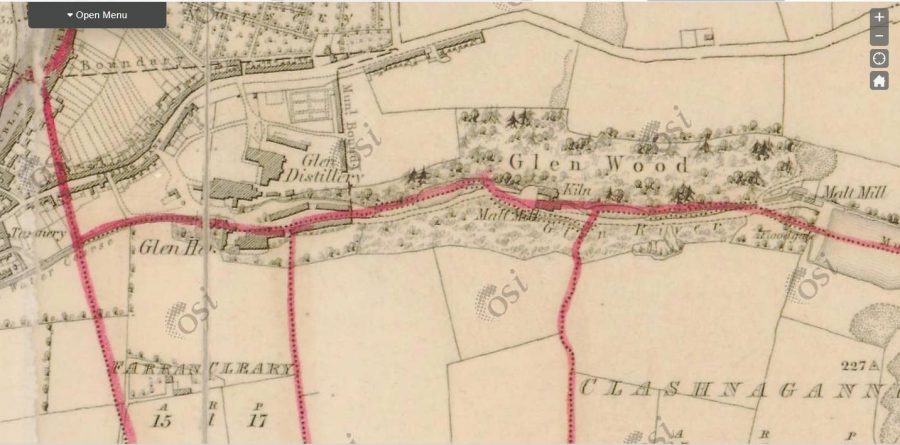
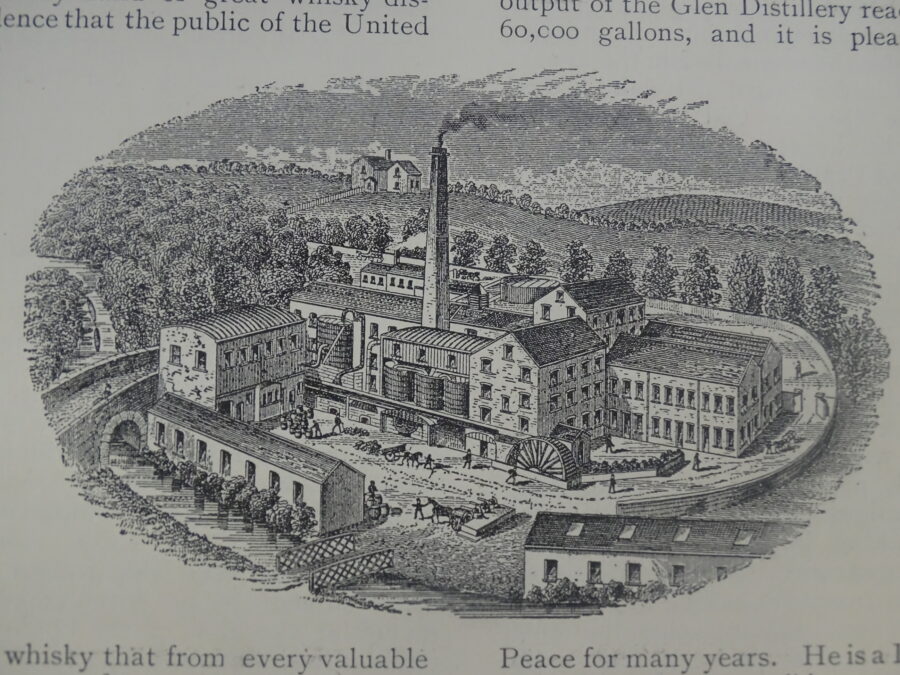
Kiernan and Green Distilleries:
Distilling became significant in the Cork region only during the last decades of the eighteenth century. There were five distilleries in the Blackpool district in 1850 — Daniel Callaghan and Co., James Daly (in John Street), Hewitts (Watercourse Road), and James Kiernan (Thomas Davis Street), where also was situated James Punch’s Green Distillery.
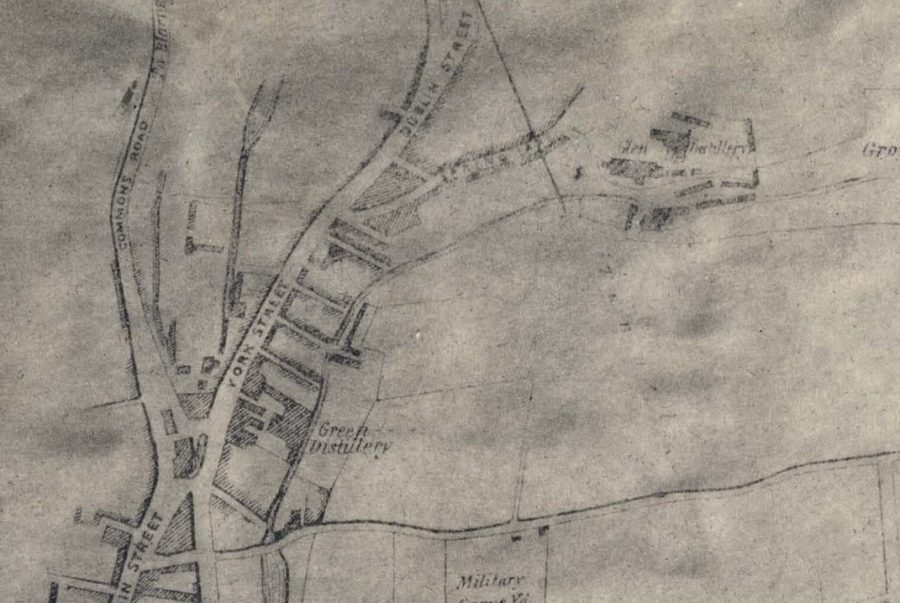

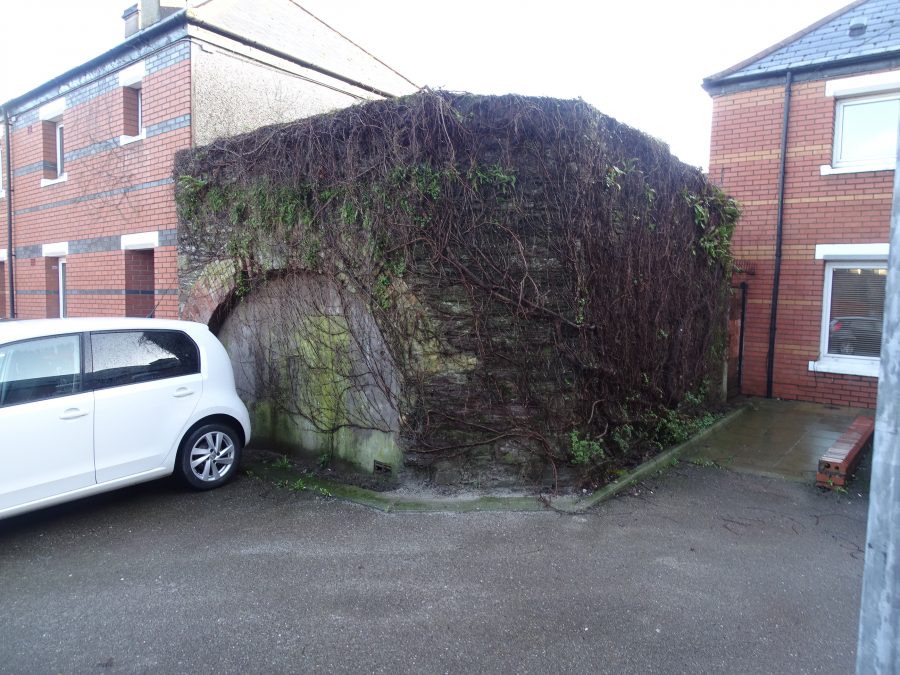
Thomas Davis Street:
Through a motion by Councillor Buckley to the Corporation of Cork, York Street changed to Thomas Davis Street in 1905. Thomas Osborne Davis (1814 – 1845) was an Irish writer who was the chief organiser of the Young Ireland movement.

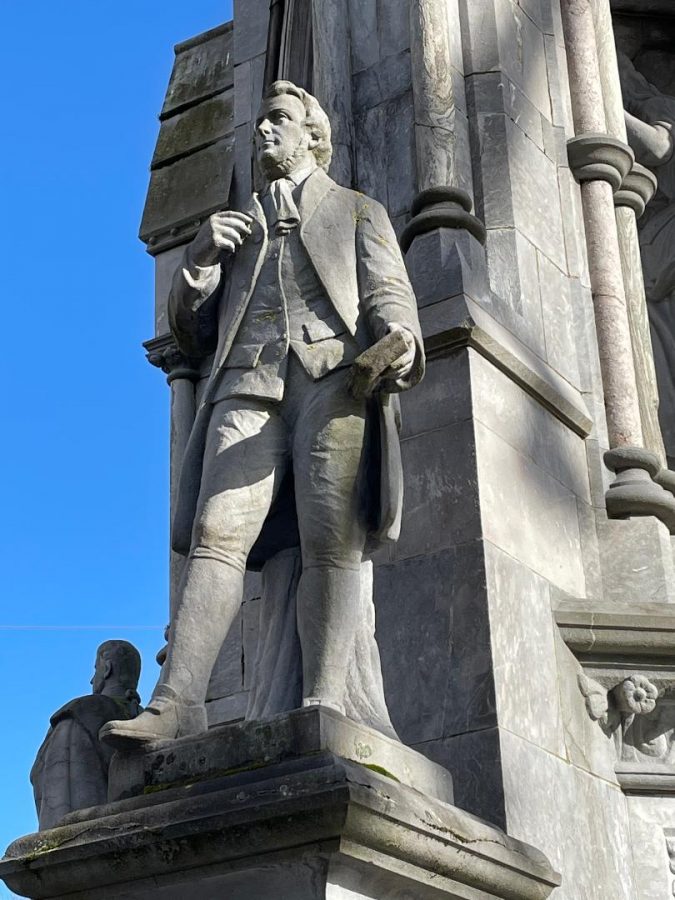
D J Coakley’s sculpture of Thomas Davis, National Monument, Grand Parade, Cork (picture: Kieran McCarthy)
Flour Mills at Assumption Road:
Construction of the Bypass of Blackpool village began in February 1997. This bypass links the Mallow Road with Leitrim Street. The construction was monitored by a team of archaeologists from Cork City Council.
Construction of the Bypass involved the demolition of some industrial buildings and during the archaeological monitoring their ground plan was exposed and recorded. Some of the walls and associated features of the late eighteenth century–early nineteenth century flour and corn-mill at Assumption Road were exposed in the course of the excavation for the new Kiln River culvert.
According to local information Assumption Convent stands on the site of a flour milling business. In the nineteenth century Blackpool had at least ten mills.
The mill at Assumption Road stood at a point, where there was a bend in that road. The road itself was called ‘Back Miller’s Lane’ on the Ordnance Survey 1841 Map and Watercourse Mill Road on the 1869 map. The owner of ‘Black Miller’s Lane’ in 1852 is stated to have been Cornelius Kelleher and the property was valued at the time as £47 per annum (Griffith 1852, 237-238).
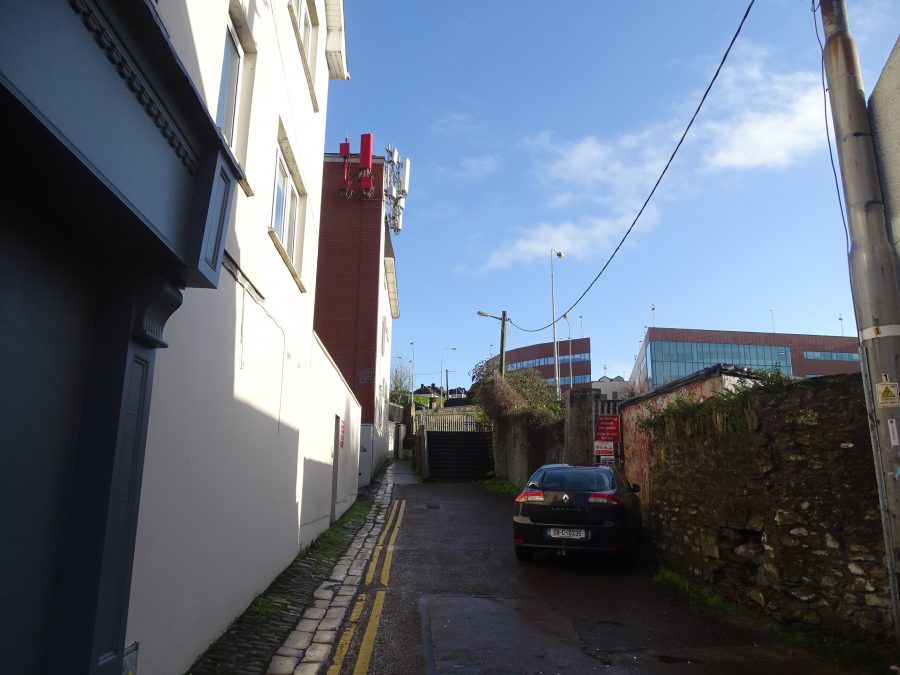
Lido Cinema:
Blackpool Cinema first opened on the site in 1920, and was re-opened as The Lido in 1931 following renovations. It closed in the early ’60s following a stabbing incident, and re-opened as The Palladium for a short time, before closing for good in 1965.
Local historian Tom Foley remembers has vivid memories of the role the local Lido cinema played in the lives of children growing up in the area in the 1940s and 1950s;
“You could pay to get into the cinema with jam jars. You could get a ha’penny each for a jam jar, and it was fourpence to get into the Lido. When they’d start the projector, it took extra electricity and so the exit lights would dim. That’s how we knew the picture was going to come on. There were wooden seats in the front and padded seats that cost a shilling in the back; when the lights went down, five or six would hop over into the padded seats and the manager, a Mr Coughlan, would have to come down with his flashlamp to try to get them out.
There’d be three films on a week, and it cost the same to go in to the three in the Lido as it cost to go into the Savoy in town once. Most of our teenage years were spent going to the Lido three times a week.
Running messages for elderly neighbours was one way of earning the entrance fee, and another was to collect empty jam jars, eight of which would cover the price of a ticket”.
Post its cinema days, the building housed O’Meara’s camping supplies shop for many years, it is now home to Cork Community Art Link (CCAL).
READ MORE: The above is adapted from Ellie O’Byrne’s interview with Tom Foley, The Echo, 24 March 2020, 100 years of Lido cinema in Blackpool is being celebrated (echolive.ie)

Cork Community Artlink:
The home of Cork Community Art Link is now in the former Lido Cinema.
From St Patrick’s Day and Bonfire night in Cork’s Middle Parish in the 1990’s to the Dragon of Shandon, Cork Community Artlink (CCAL) works in partnership with people to co-create, celebrate and imagine together.
Its website emphasises that each street spectacle project undertaken by CCAL is based on an extensive outreach programme in partnership with the community and voluntary sector. High standards of artistic excellence are encouraged as is the researching of new techniques and ways of making unique puppets and props.
Voluntary participation is the foundation of each project with lots of opportunities for adults to come along, learn new skills and make a creative contribution to the community.
VISIT CCAL’s website for more details and access to a myriad of film footage on their work: CORK COMMUNITY ART LINK – Cork community art link
VIEW footage from Kieran on the Dragon of Shandon Parade here:
Watercourse Distillery:
Hewitt’s Watercourse Distillery was established in 1792 by Thomas Hewitt, John Teulon (both butter merchants) and Richard Blunt (a London distiller). By 1794 the production and sale of whiskey had begun.
Although sales kept rising during the first decade of the nineteenth century, the distillery was having endless trouble with water power due to the many other industrial concerns using the same supply. Consequently in 1811 the company purchased two steam-engines (a new technology) from Birmingham at a cost of £2,062. The Watercourse Distillery was one of the first distilleries in the country to do so.
The company even bought a large saw-mill in 1830, which they subsequently dismantled so that there would be one less claim to the mill-race and hence the limited supply of water.
The distilleries in the Cork harbour area primarily produced pot still whiskey (repeated distillations producing a spirit with a characteristic flavour), but by the early 1830’s patent or continuous stills (more economical and producing spirits with a higher alcohol content but with less flavour) were employed at the Watercourse Distillery.
In 1834 the Hewitt family took sole ownership of the distillery and a full description of the distillery was drawn up at the time for insurance purposes. The building inventory included a boiler and still-house, containing three iron steam-boilers; a brew-house which also contained boilers and cast metal mash-tuns; a fermenting back-house with coolers; two engine houses with a number of boilers (with three steam engines) a malt-house, kilns, corn store, spirit store and water-mills.
The Hewitt family sold the distillery to the Cork Distillers Company in 1868. By 1876, distilling had ceased at the Watercourse Distillery, although the maltings, cornstores and warehouses were still used by the company.
According to local information this latter building was used for yeast fermenting and drying during the 1940’s and 1950’s. By this time the distilling process had been relocated to the North Mall Distillery and Irish Distillers Ltd used the majority of the buildings at the Watercourse Road complex solely as warehouses. A cooperage was still in business, however, and occupied a workshop in the southern area of the Industrial Estate.
Following the demolition of some industrial buildings for the construction of the Bypass of Blackpool village (which began in February 1997) the ground plan of several early nineteenth century buildings were uncovered and recorded during archaeological monitoring of the construction works by a team of archaeologists from Cork City Council. One of these sites was part of Hewitt’s Watercourse Distillery (the Steam Mills/Grain Store Building), which were dated to the end of the eighteenth century to the beginning of the nineteenth century.
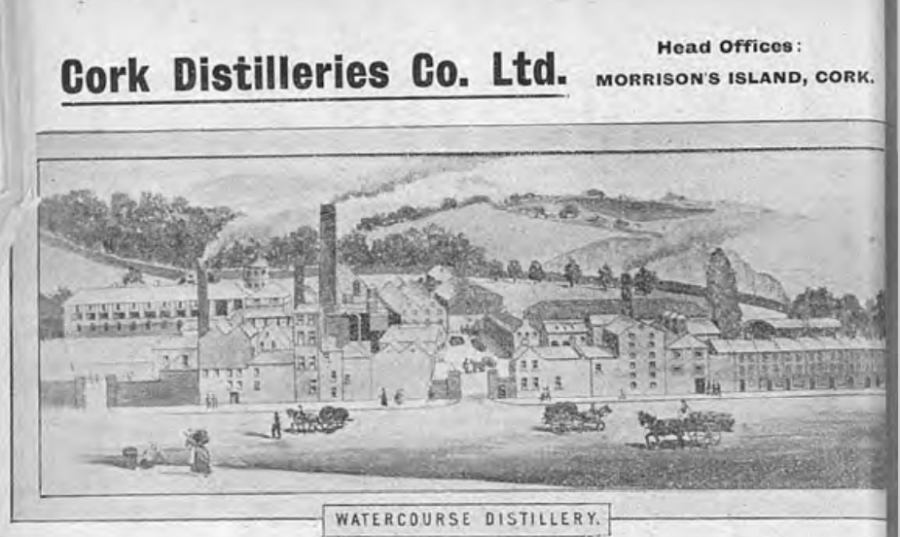
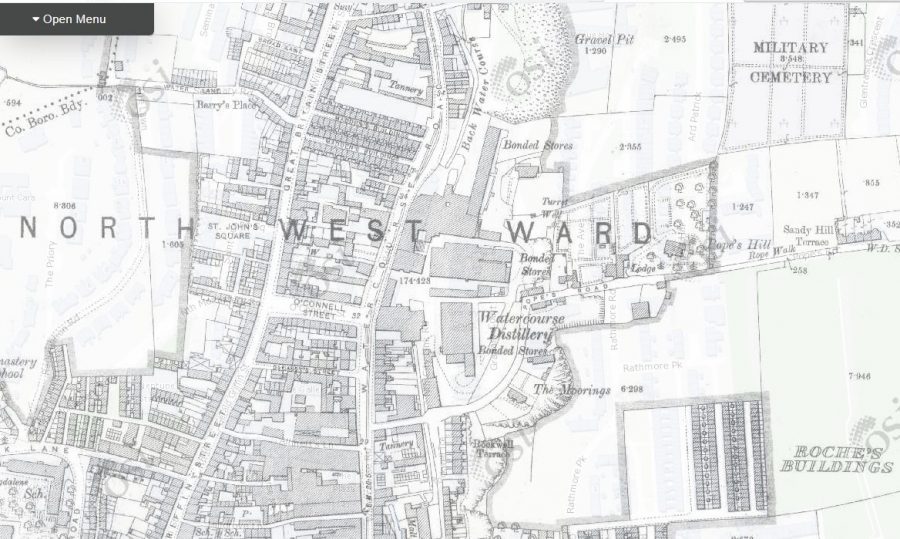
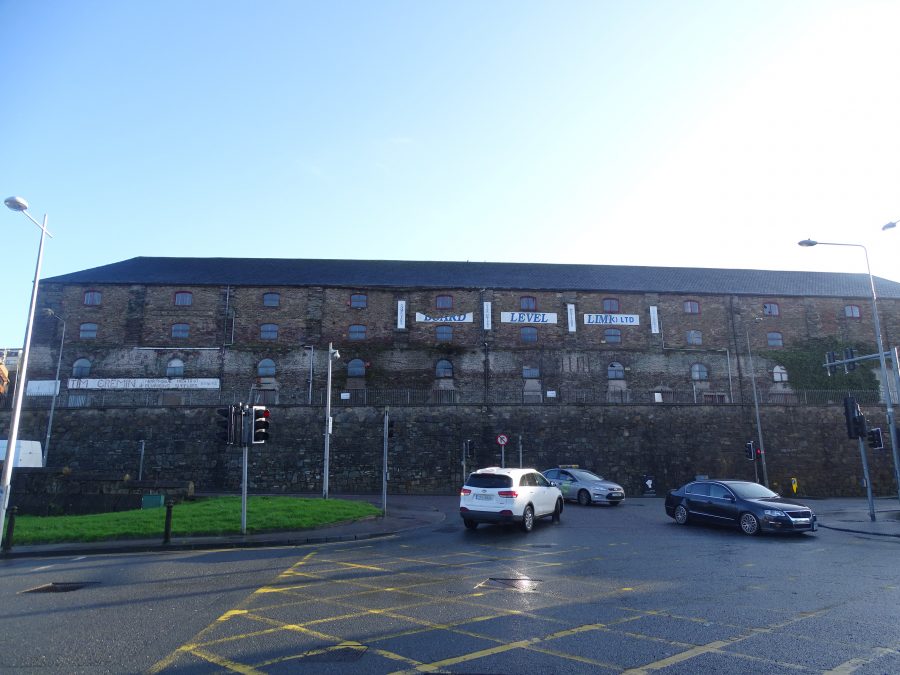
READ more about the archaeological survey and dig work in this book available in Cork City Library:

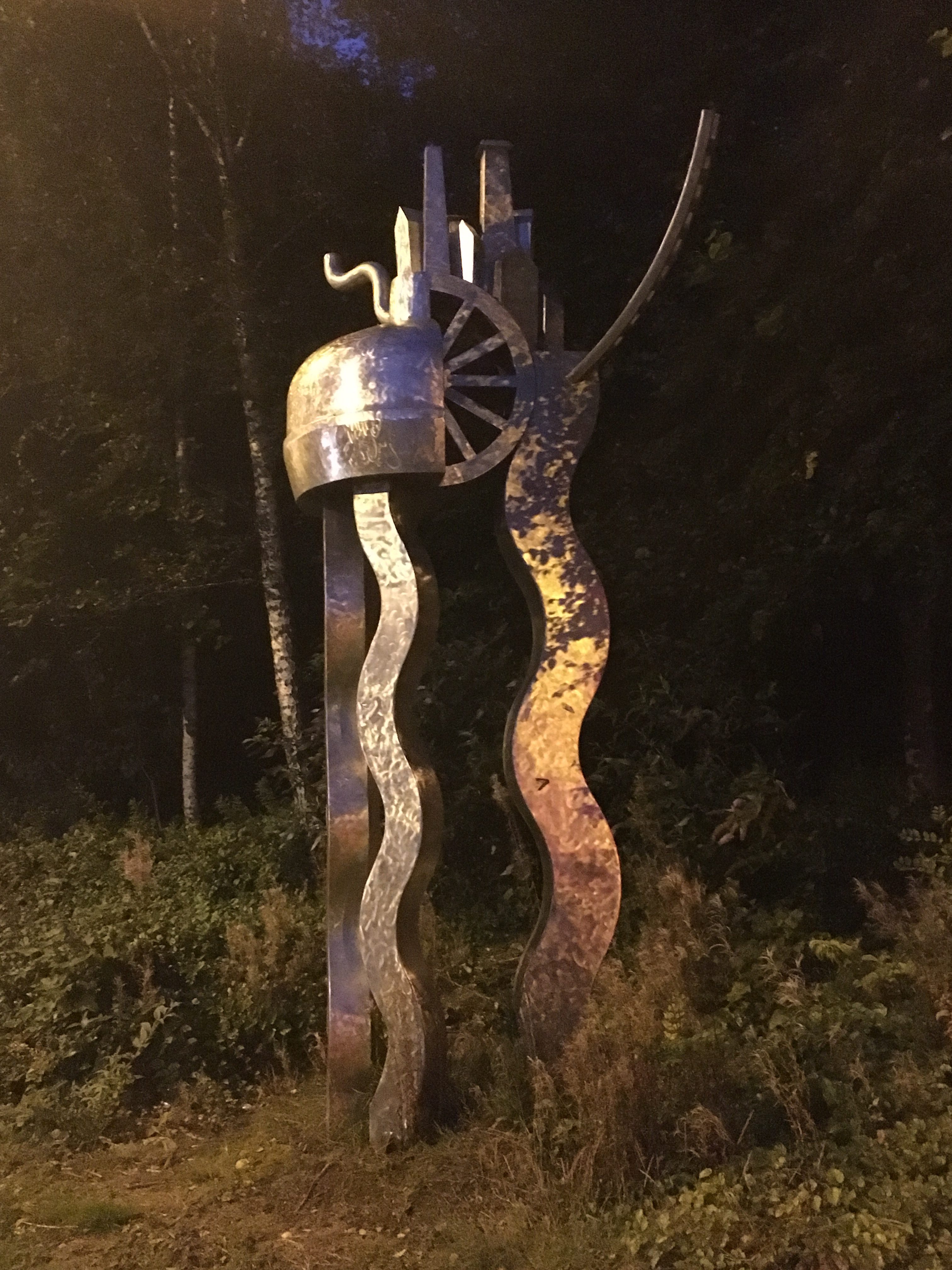
Seamus Murphy’s Workshop Site:
Born in county Cork in 1907, Seamus Murphy was one of the foremost stone carvers and sculptors of his time.
From 1922 until 1930 he worked as an apprentice stone carver at John Aloysius O’Connor’s stoneyard in Blackpool, Cork. He received a scholarship in 1931, which enabled him to go to London and then to Paris, where he was a student at the Academic Colo Rossi and studied with the Irish-American sculptor, Andrew O’Connor. After returning to Ireland, he worked in O’Connor’s stone yard, then in 1934, opened his own studio at Blackpool. Among his first commissions were the Clonmult Memorial at Midleton, two statues for Bantry Church and a carved figure of St Gobnait in Ballyvourney graveyard.
The Virgin of the Twilight was exhibited at the Royal Hibernian Academy in 1943, and was later erected at Fitzgerald’s Park, Cork. In 1939 he exhibited at the World Fair, New york. In 1944 he was elected associate of the RHA. That same year he married Maighread Higgins, daughter of Cork sculptor Joseph Higgins. In 1945 he designed Blackpool Church for William Dwyer, and in 1947 carved the apostles and St Brigid for a church in San Francisco. Another of his sculptures is in St Paul, Minnesota.
His memoir Stone Mad tells the story of his seven years of growing knowledge, of the challenges and joys of stone – and of the men who worked it. Full of warmth and humour, the book bristles with fascinating facts about the trade, the time and the place.
Seamus became professor of sculpture at the RHA in 1964, and was awarded an Hon LLD by the National University of Ireland in 1969. Murphy died in Cork in 1975, and is buried at Rathcooney graveyard.
LEARN MORE on the specific Seamus Murphy history trail: History Trail, Seamus Murphy, Cork Sculptor | Cork Heritage
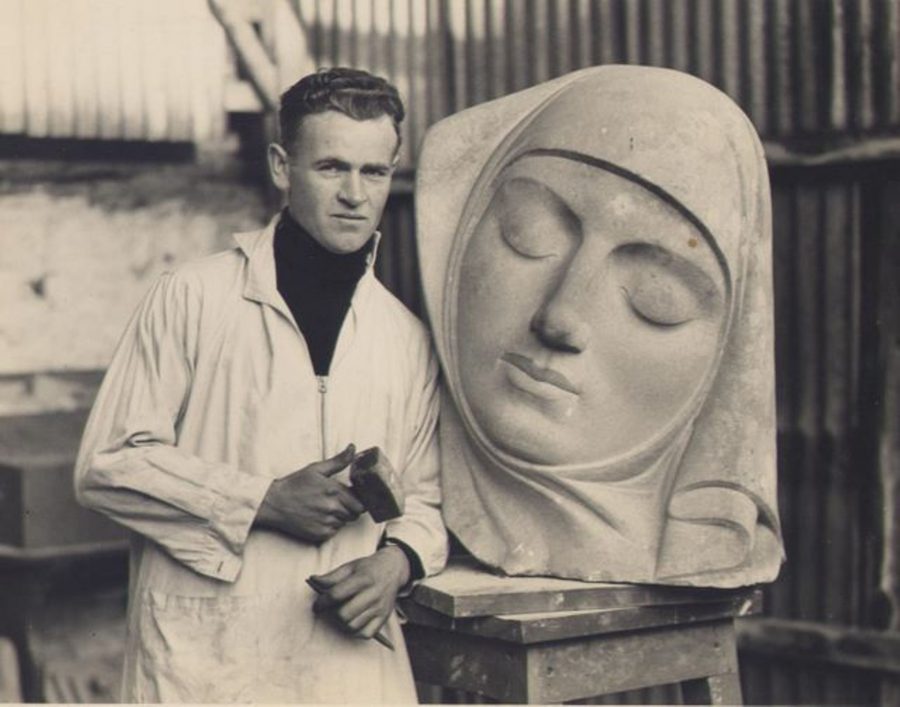
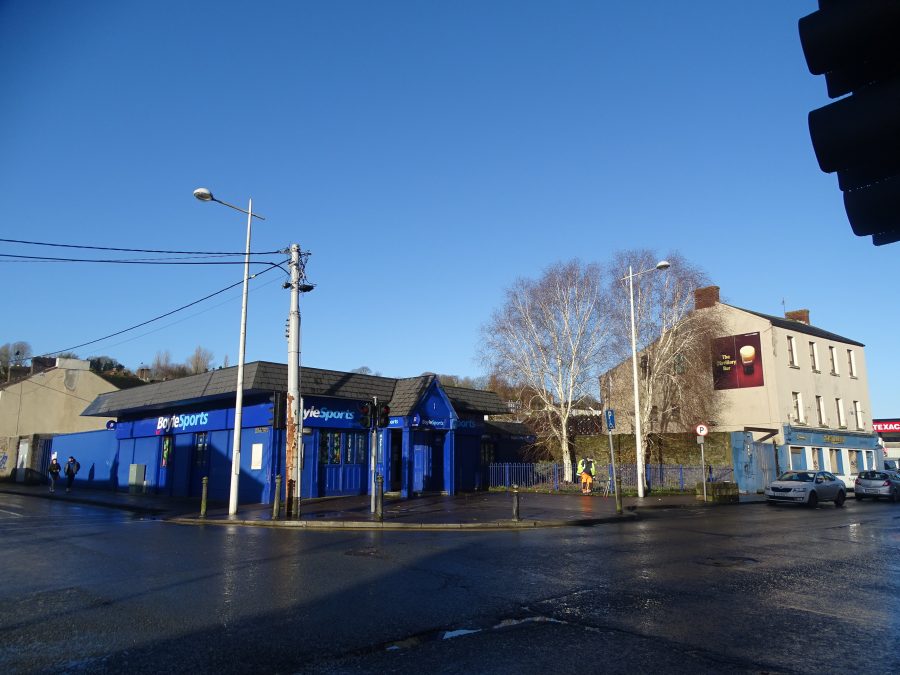
Dunn’s Tannery:
The principal tannery in nineteenth and early twentieth century Cork was Dunn’s at 26 and 38-40 Watercourse Road. It had been founded in 1808 by Patrick Dunn at Clarence Street (now Gerald Griffin Street) and moved to above in 1810. Another one of the most extensive tanyards in Cork belonged to Daniel, fourth son of Jeremiah Murphy. A partnership formed with the firm of Dunn Brothers who amalgamated their business and what emerged became the largest tanning concern in the country at the time.
At the 1883 Cork Exhibition, the newspaper coverage on the exhibits refers to Dunn’s leather butts as long having been the standard article of sole leather in the South of Ireland. All the hides used by Messrs Dunn were obtained from the River Plate in South America, where the thickest hides in the world were produced. Messrs Dunn rounded the greater portion of their hides, i.e. they cut off the inferior portions, which when tanned were called offal, and when only limed and dried were called glue pieces, and these were used by paper manufacturers in sizing their paper.
In 1892, in a guide by authors Stratten and Stratten of the leading mercantile houses and commercial enterprises, they described the Dunn Tannery in Watercourse Road as a “large and well-constructed hollow square covering about two acres”. The centre formed the tan pits, around which were the various drying sheds workshops, stores, leather warehouses and offices. The various works were laid out on a very extensive scale and were complete with the latest machinery of the day.
The Dunn Brothers’ great speciality were sole leather in butts and bends. They purchased exclusively the best South American hides, and employed only the most effective and highly-reputed astringents, such as bark and valonia. Stratten and Stratten remarked: “The firm has a substantial right to the high reputation and eminent position it has so long enjoyed in the commerce and industry of the country”.
Messrs Dunn Brothers continued to turn out a class of leather for which there was a good demand, but their business closed down some time before the death of Mr Christopher J Dunn in November 1916.
Christopher Dunn had been identified with the commercial and industrial life of Cork for very many years and was chiefly concerned in the tanning business. He was a director of the Cork Steam Packet Company, and from time to time acted on the public boards of the city. He was educated at Clongowes, was President at one time of the Cork Incorporated Chamber of Commerce and Shipping, President of the Literary and Scientific Society, was elected Governor of the Munster Institute in 1907, and was Vice-chairman of the machinery section of the Cork International Exhibition of 1902.
Christopher was a member of the City Magisterial Bench, the Cork Butter Market Trustees, the directorate of the Cork Gas Company, and Messrs. Eustace and Co. He was also High Sheriff of Cork at one time, and a member of the Governing Body of the University College since 1910. He was the author of a work entitled Machinery and the Masses and on many occasions contributed papers and essays on industrial matters.
In 2006, large parts of the tannery buildings were demolished to make way for the Blackpool Bypass.
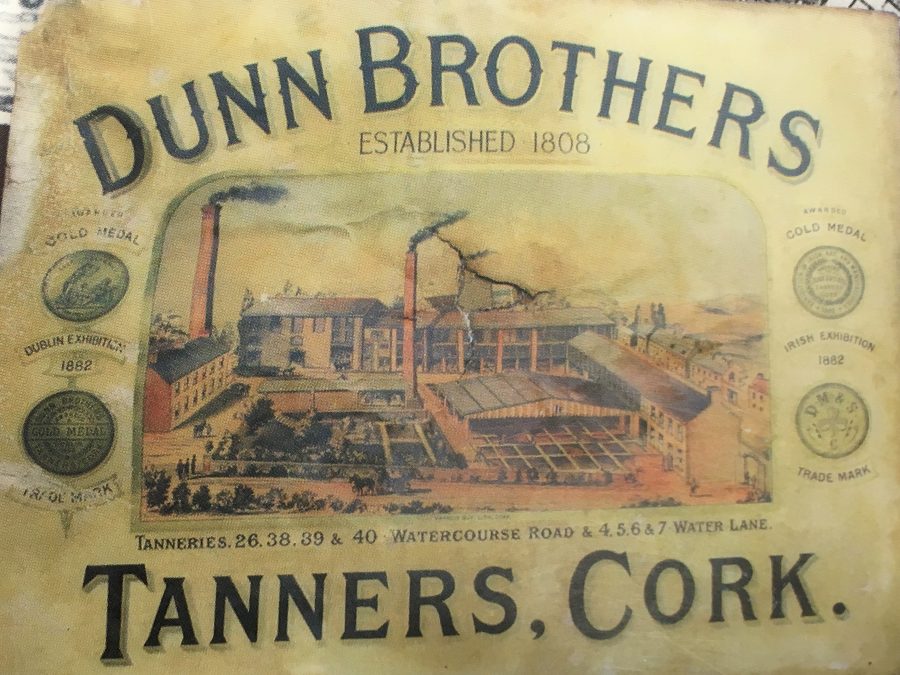

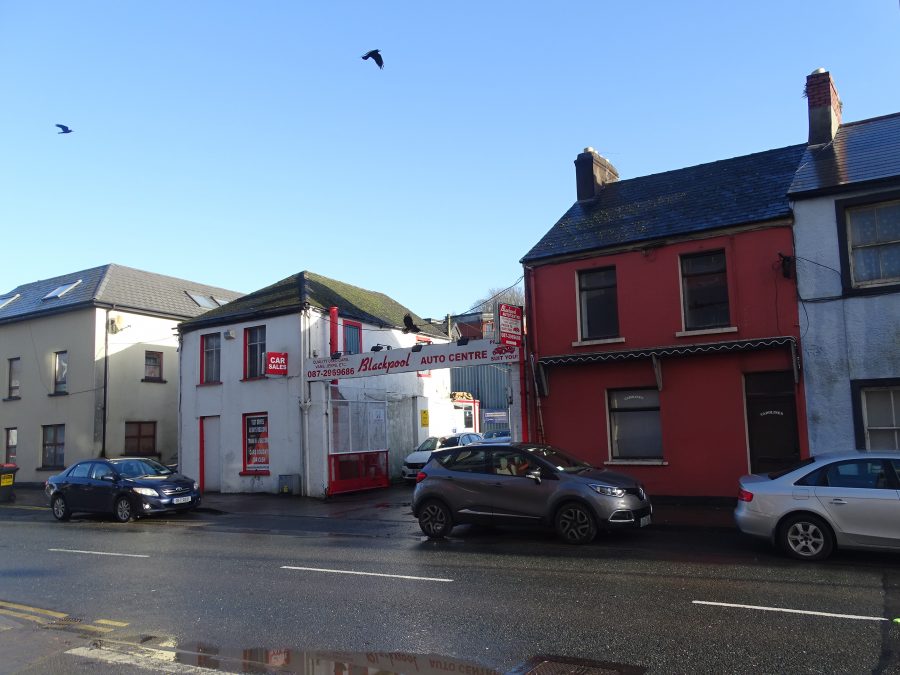
The Poor House:
The Foundling Hospital for Cork’s impoverished children was established at Leitrim Street in 1747 on a site now occupied by Heineken Ireland. It is argued by historians that the inside of the brewery’s old entrance arch is part of the old entrance to the old Foundling Hospital.
On a map by Charles Smith it is marked as the Poorhouse. It was mainly funded by a tax on the import of coal. Writer Samuel Lewis in 1837 that the building was a small quadrangle, of which the chapel formed one side; the other three were appropriated to school-rooms (two for the boys and two for the girls), dormitories, and other necessary apartments. Lewis further details that the hospital was governed by an incorporated board, consisting of the Diocesan, the Mayor, recorder, aldermen, sheriffs, common-councilmen and common-speaker with 26 of the commonalty by the city’s Court D’Oyer Hundred, was maintained by a local tax coal and culm, weighhouse fines, carriages licenses and penalties on car drivers, amounting to about £5,500 annually.
Lewis describes that the infants received periodically from the churchwardens, are placed out at nurse, till they were six or seven years old, when they became inmates until of an age to be apprenticed. The average number of the former nursed children was 1,000. Of the latter children to be apprenticed, there were educated as Protestant and bound to Protestant masters.
The Governors of the Hospital sanctioned a resolution in 1838 that no new admissions would be permitted and the numbers, therefore, declined until there were but sixteen. Two years later the buildings were sold for £1,200 by the Poor Law Commissioners and the money was placed to the credit of the Cork Board of Guardians. The inmates were transferred to the Cork Workhouse on Cork’s Douglas Road.
Now the home of Heineken Ireland, its predecessor Our Lady’s Well Brewery was founded on the Foundling Hospital site in 1854 by James J, William J, Jerome, and Francis J Murphy. In 1884, the business was, from family reasons, transformed into a private limited company, of which Francis Murphy was chairman.

Lady’s Well Brewery:
Now the home of Heineken Ireland, its predecessor Our Lady’s Well Brewery was founded in 1854 by James J, William J, Jerome, and Francis J Murphy. In 1884, the business was, from family reasons, transformed into a private limited company, of which Francis Murphy was chairman.
From the very beginning, the brewery comprised a vast group of buildings of irregular height and extent in Leitrim Street with an array of complex and up to date engines and machinery. Many buildings have survived through restoration programme into the present day.
Old sketches and old photographs show an elaborate Brewery entrance, a large courtyard where thousands of barrels were waiting their turn to be filled. The malt used in the brewery was largely made from barley grown in the neighbourhood of the city. County Cork was considered to be one of the best barley growing counties in Ireland.
The local industries connected with the brewery occupied one side of the quadrangle, and consisted of fitters, carpenters, coppersmiths’ shops, cooperages, and a cask manufactory. Daily sturdy draymen in well-fitting white smocks lead their horses out of the yard to destinations within County Cork.
One hundred years ago, in almost every town in the country there was a brewer agent, or rather purchasing agent. These purchasing agents were, in nearly all cases, retail vintners themselves. There were circa 520 public houses in Cork city, with its population of about 76,000—that was one public-house for every 150 persons. The Cork breweries employed around 500 men.

WATCH: Doireann Garrihy takes a trip to Cork city to visit the Heineken brewery (Drink Responsibly):
Poulraddy Harbour:
Another place of interest associated with the Kiln River was Poulraddy, which was a little riverine harbour. Near Blackpool Church the river goes underground and proceeds under the Watercourse Road. It sees the light of day again at the other side of Watercourse Road. Here it worked Archdeacon’s Mills and next comes the strange little backwater known far and near as Poulraddy Harbour.
This is a name which Blackpool folk at home and abroad are all familiar with, but nobody seems to know its origin, or when it first came into use. Some people even use the name Poulraddy to describe the entire Kiln River.
